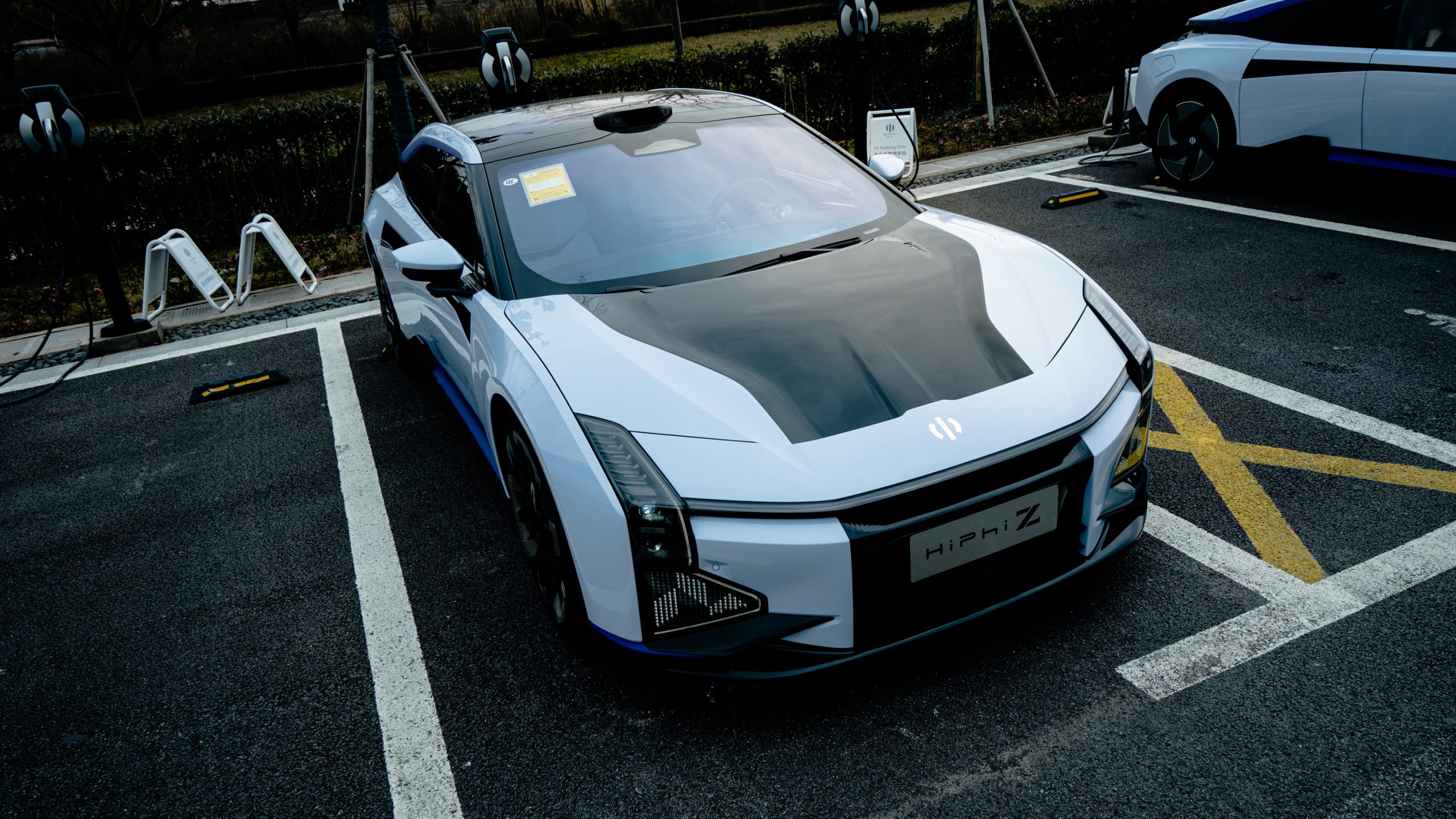You must be familiar with the brand of GAC, HiPhi, with its eye-catching appearance and innovative door designs begining with HiPhi X. And this unconventional design style is once again manifested in the HiPhi Z. As a result, when this car is driving on the street, it’s almost like a “harvester” of attention.
I was fortunately invited by HiPhi to experience the digital cockpit of their latest model, the HiPhi Z. This system is built with the Unreal Engine, the same technology as Lotus’ cockpit, which sparked my great interest.
Cockpit Experience
The interior design is actually unified with the overall appearance design, which is difficult to see in other cars. In the case of HiPhi Z, it is reflected in the sharp lines and blocky design elements throughout the interior, especially in the steering wheel.
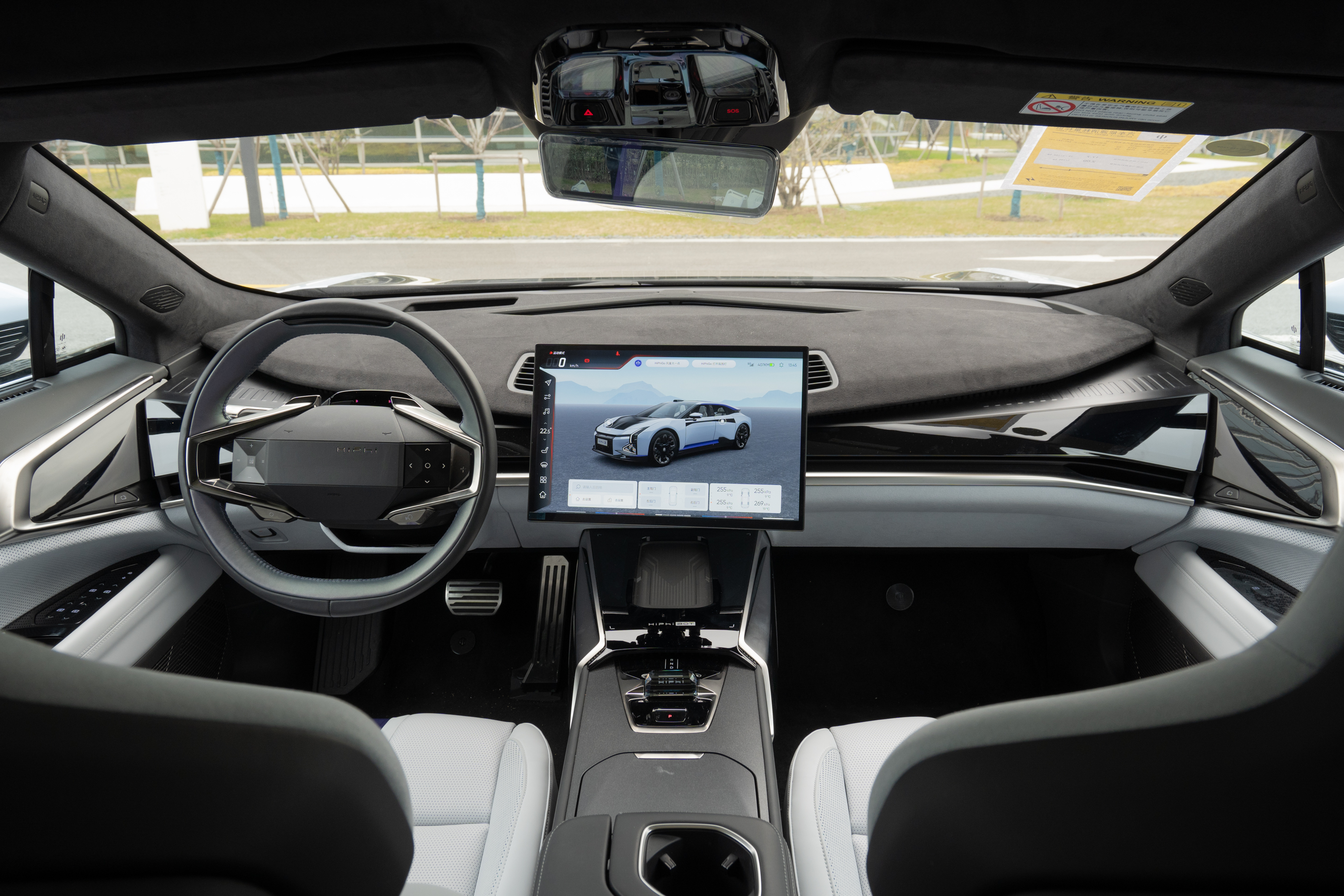
The HiPhi Z’s seats are molded like racing bucket seats, with a suede-like surface material, a very good overall texture, and both front and rear seats in the 4-seats version are equipped with seat ventilation and heating. The riding experience is relatively comfortable, which fits better visually, but still belongs to the slightly harder filling type.
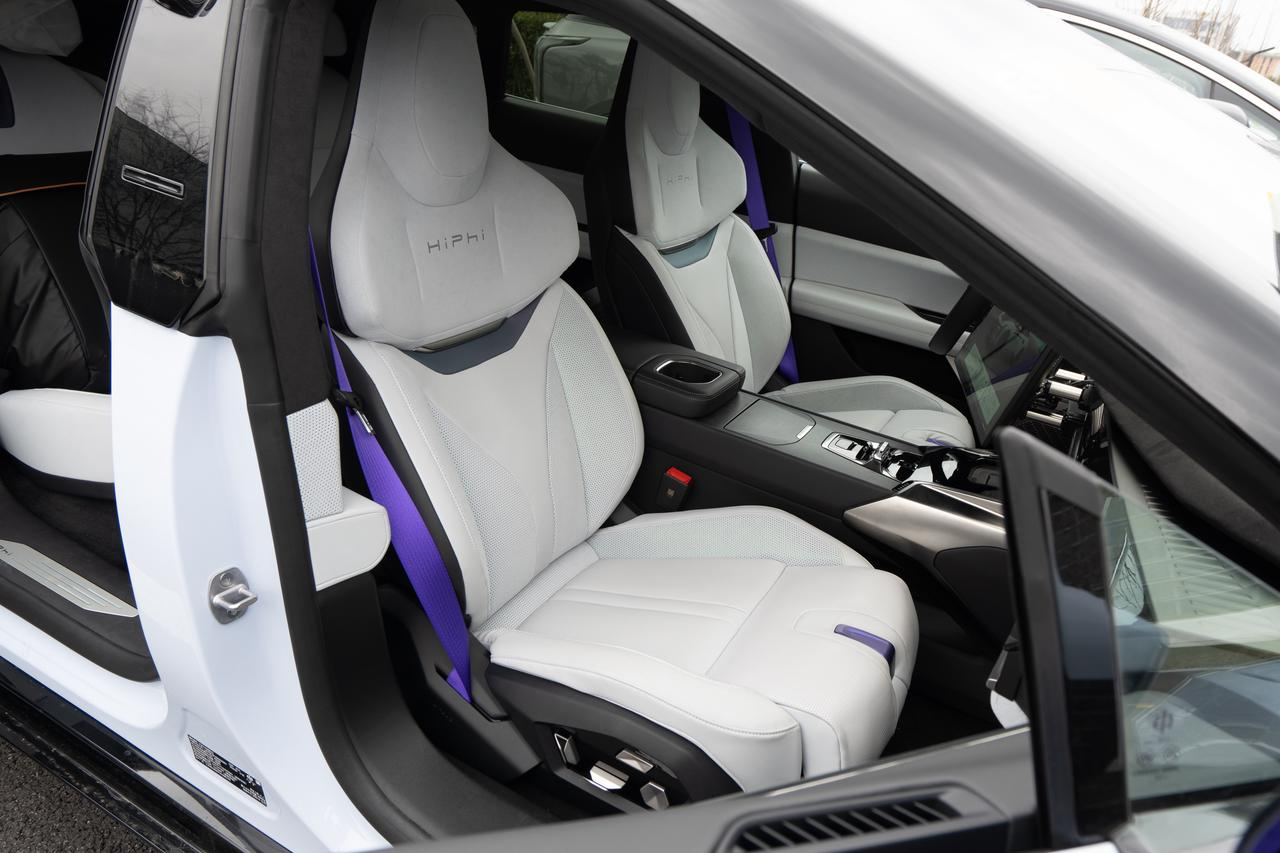
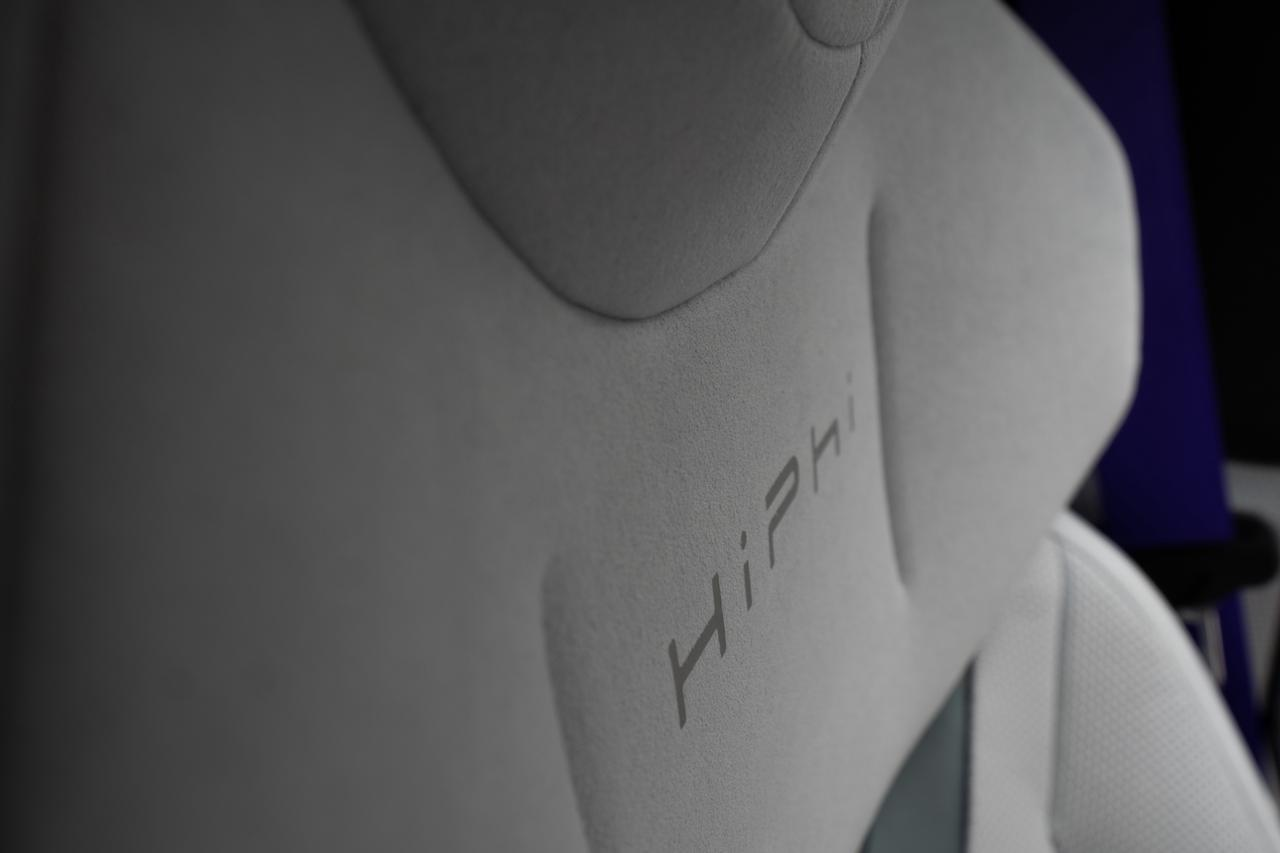
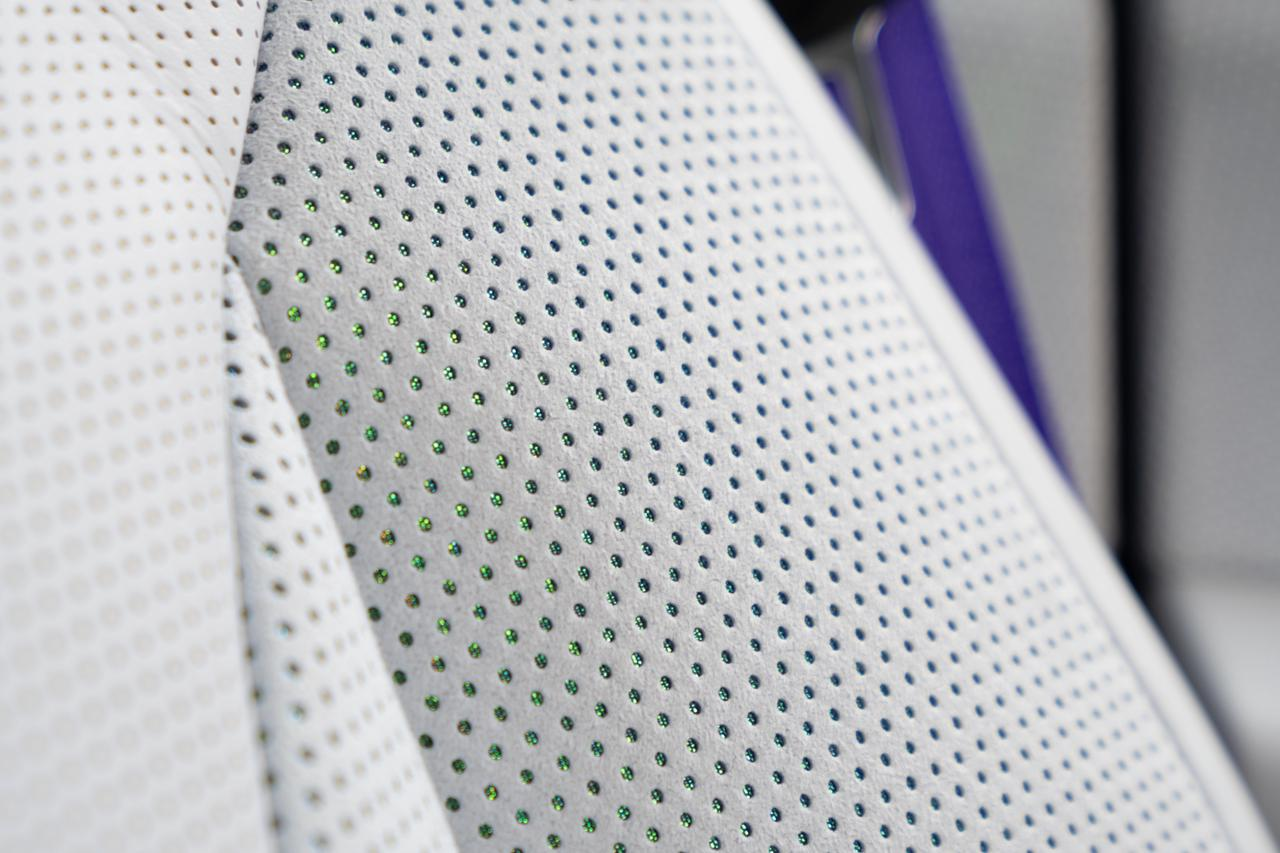
However, there is a detail on the seat that impresses me a lot: there is a layer of green reflective material beneath the perforated suede, which appears to be very dimensional in bright daylight. Similar reflective materials of different colors also appear on the steering wheel. The inner side of the steering wheel adopts a special coating technology of Nappa leather spraying, making the visual experience very unique.
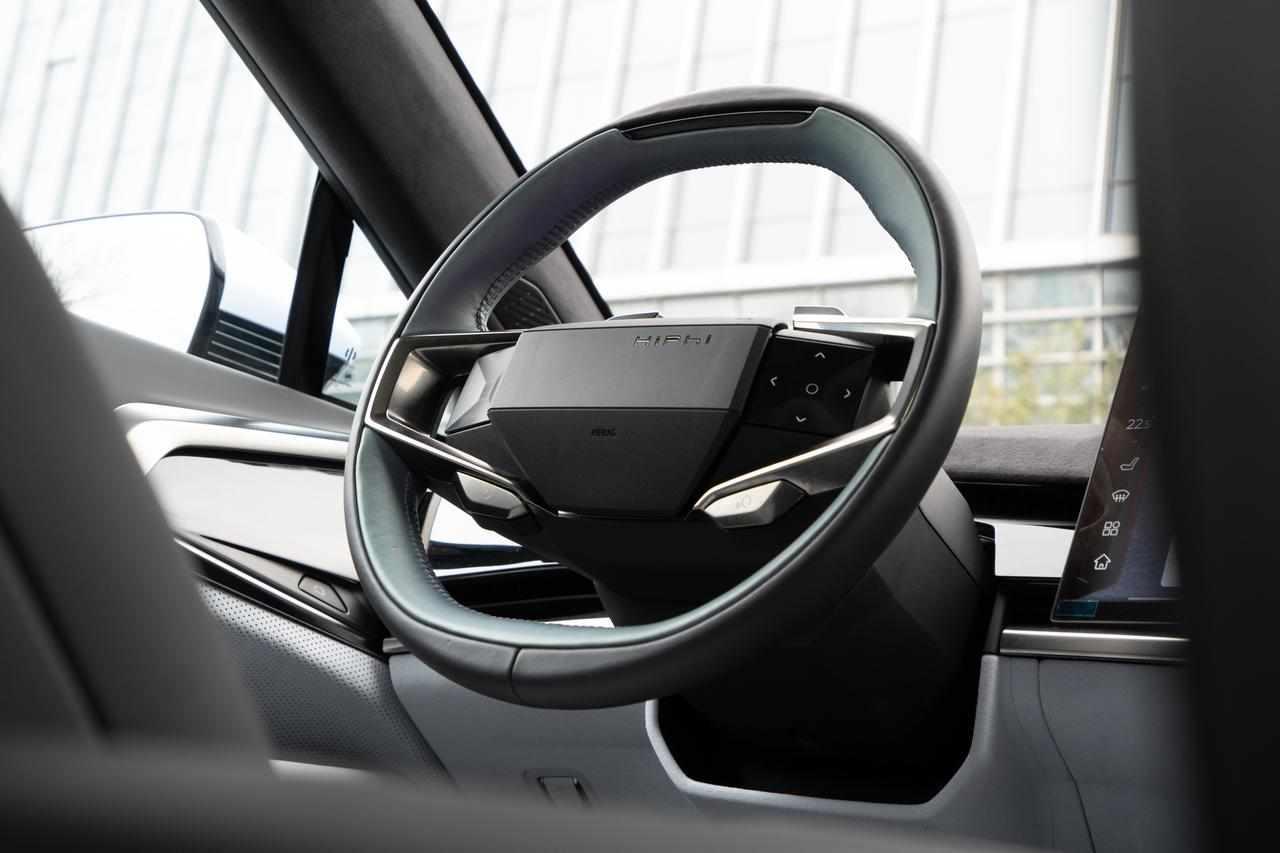 Below is the translation:
Below is the translation:
Also, we went to the basement to check out the ambient lighting. The ambient lighting is customizable and has good coverage. However, in my opinion, the design of the ambient lighting seems a bit forced and deviates from the interior and overall style.
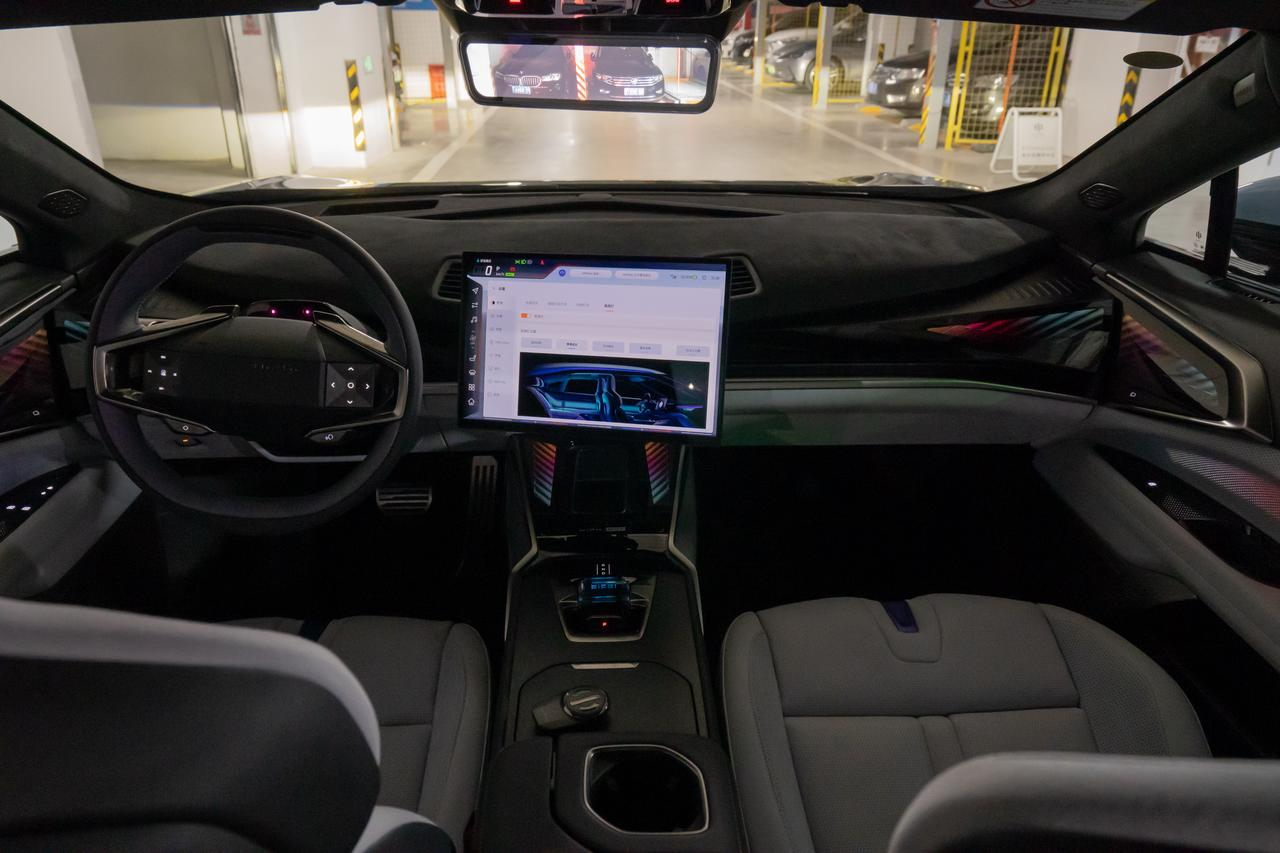
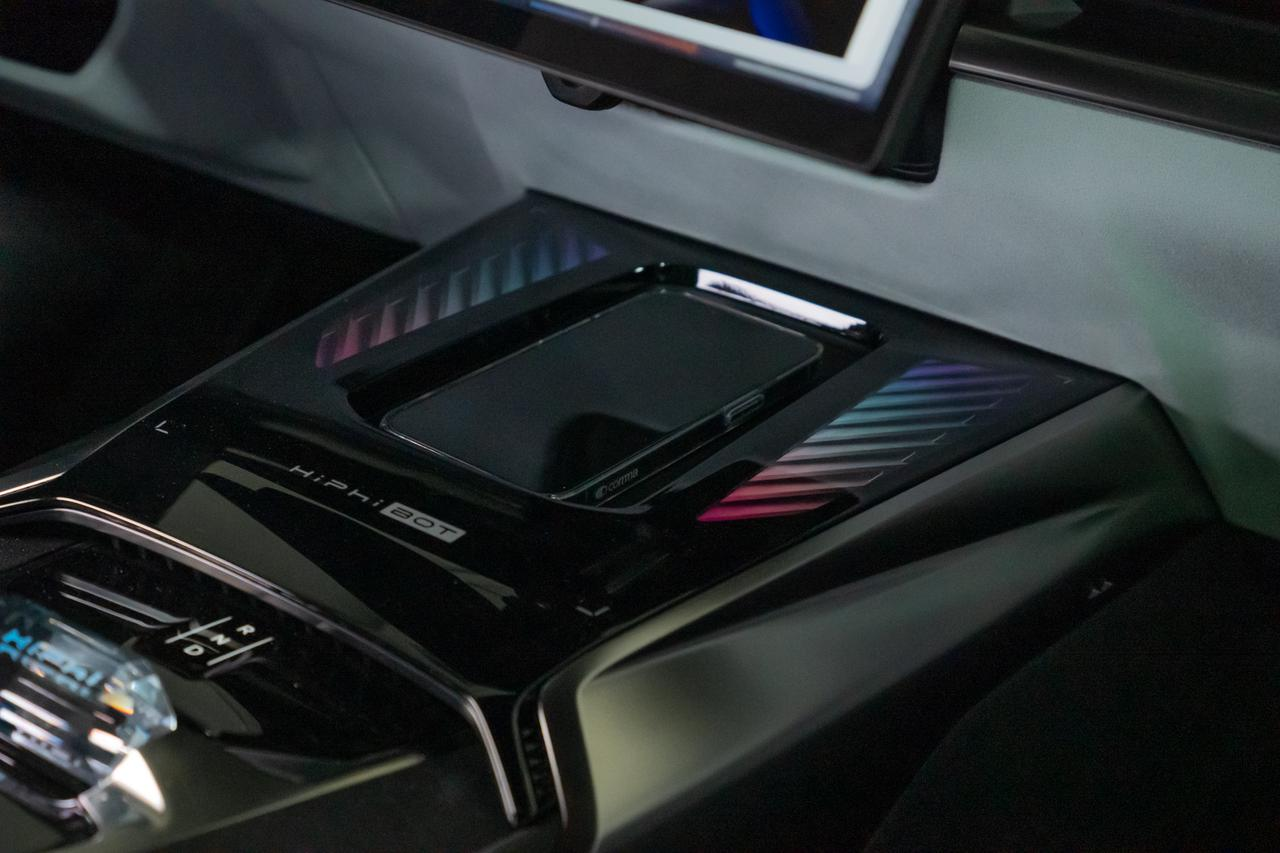
Lastly, I would like to criticize the use of piano lacquer in some areas. It is not only prone to scratches and fingerprints but also does not look high-end.

Since the car we experienced was the 4-seater version, the two independent seats in the back can also adjust their angles. The center armrest of the seats also has a control screen, allowing for convenient touch control of music, air conditioning, and seats.
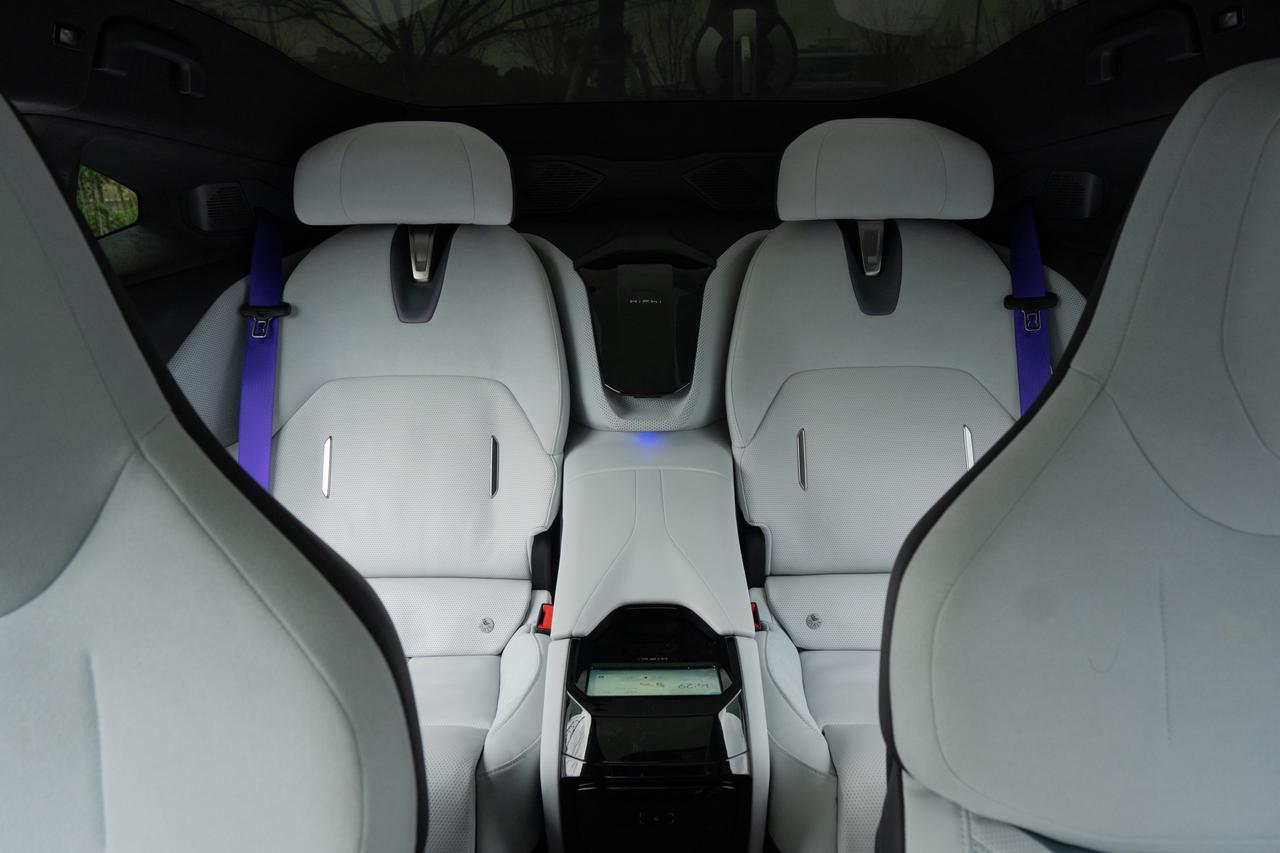
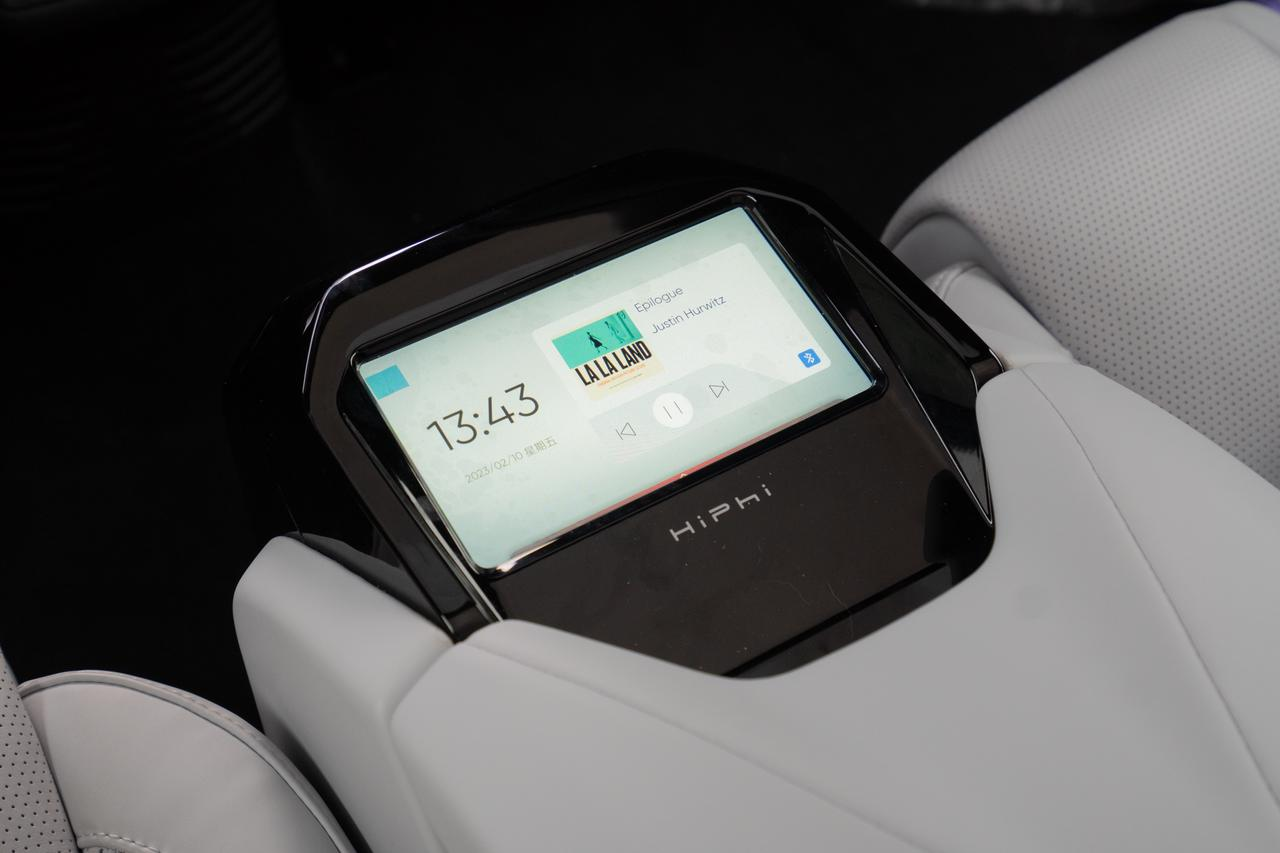
An eye-catching design highlight is that the HiPhi Z uses frameless rearview mirrors. This is the first time I have seen this design in a car model outside Polestar. The frameless design not only reduces the overall size of the rearview mirror but also provides a larger mirror surface area at the same size.
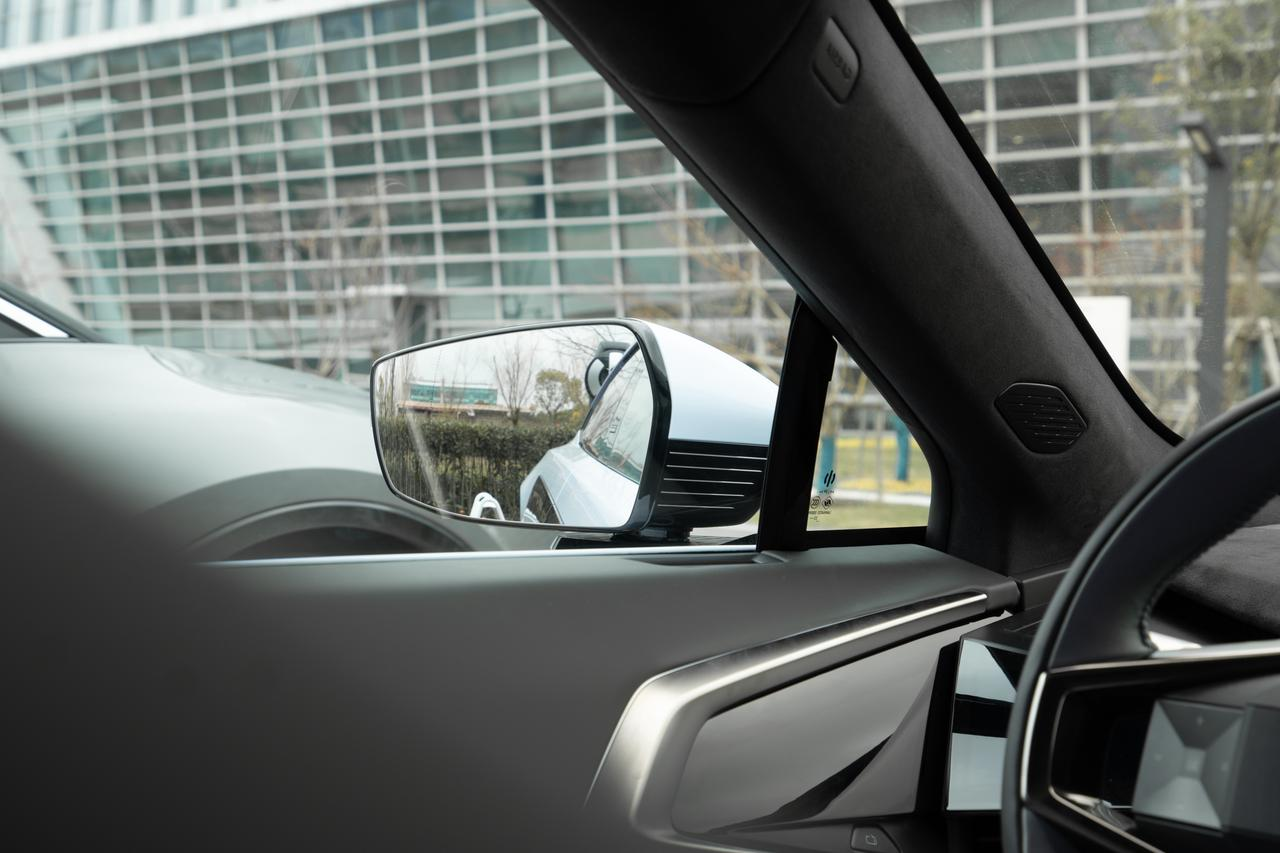
Intelligent Experience
There is a robot in the car
The most attractive feature in the car for me is the large screen design. HiPhi named the entire interactive screen “HiPhi Bot,” which consists of a 2K resolution screen and a movable mechanical arm.
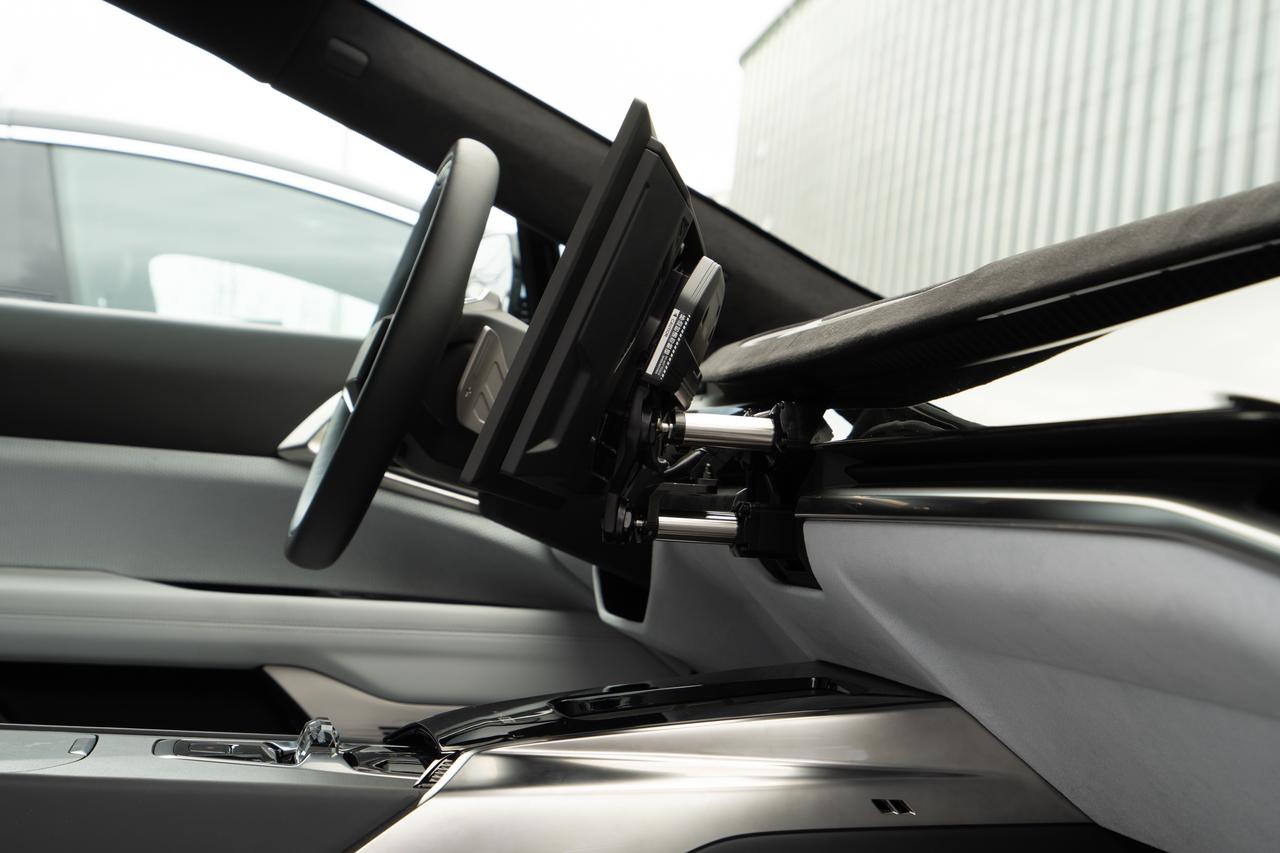 The designer has created a support structure for this screen that can be adjusted in four degrees of freedom. The base is made up of three screw electric push rods and a motor that can rotate the screen horizontally and vertically, giving it a very mechanical aesthetic when viewed from the side. This design also gives it flexible adjustment capabilities, allowing it not only to change direction, but also to point to and display images and sound like a robot greeting someone opening a car door. In some ways, it is similar to Nomi from NIO, which provides more human-machine interaction and perception.
The designer has created a support structure for this screen that can be adjusted in four degrees of freedom. The base is made up of three screw electric push rods and a motor that can rotate the screen horizontally and vertically, giving it a very mechanical aesthetic when viewed from the side. This design also gives it flexible adjustment capabilities, allowing it not only to change direction, but also to point to and display images and sound like a robot greeting someone opening a car door. In some ways, it is similar to Nomi from NIO, which provides more human-machine interaction and perception.


Apart from these mechanical aspects, the screen that comes with this base has some interesting features. For example, it can be linked to the up and down adjustment of the seat to match the driver’s angle of view, although it may not always maintain a vertical angle with the driver’s eyes, it still provides some convenience for touch operations.
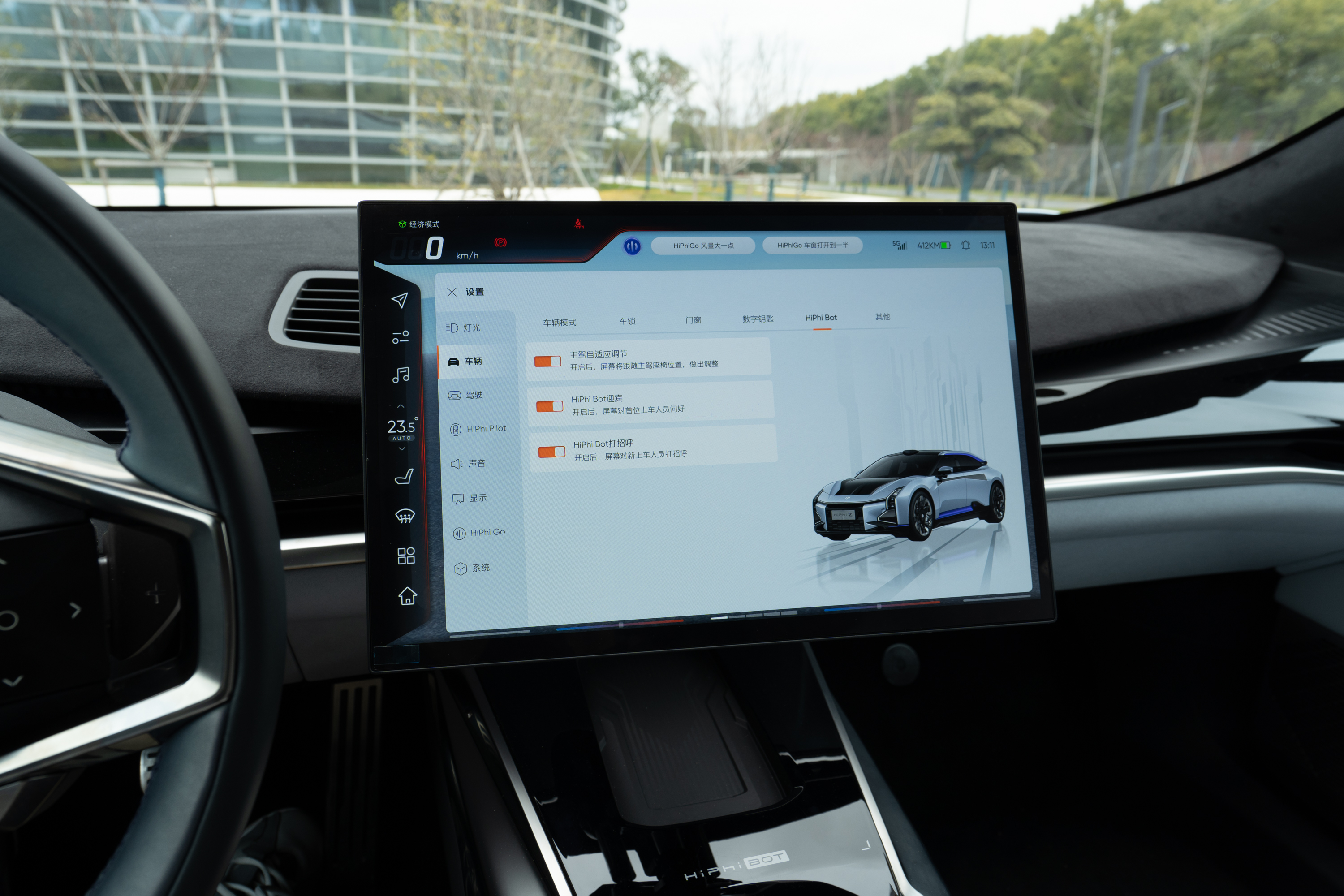
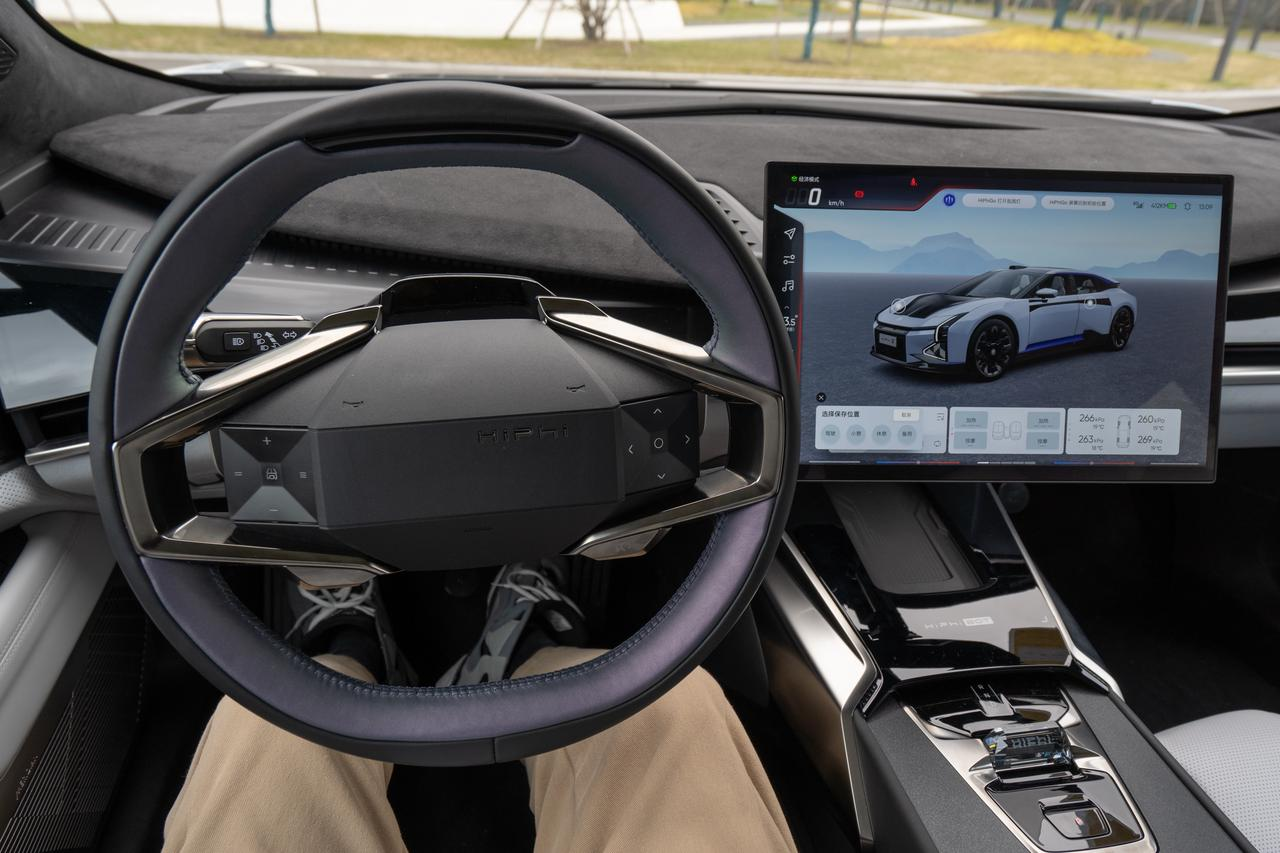
What surprises me the most is that this screen can be smoothly manually adjusted through sliding the unlocking module on the screen, releasing HiPhi Bot’s robot arm, and then automatically locking after adjustment with a delay. Overall, the HiPhi Z should be the most flexible screen structure currently available in any car.
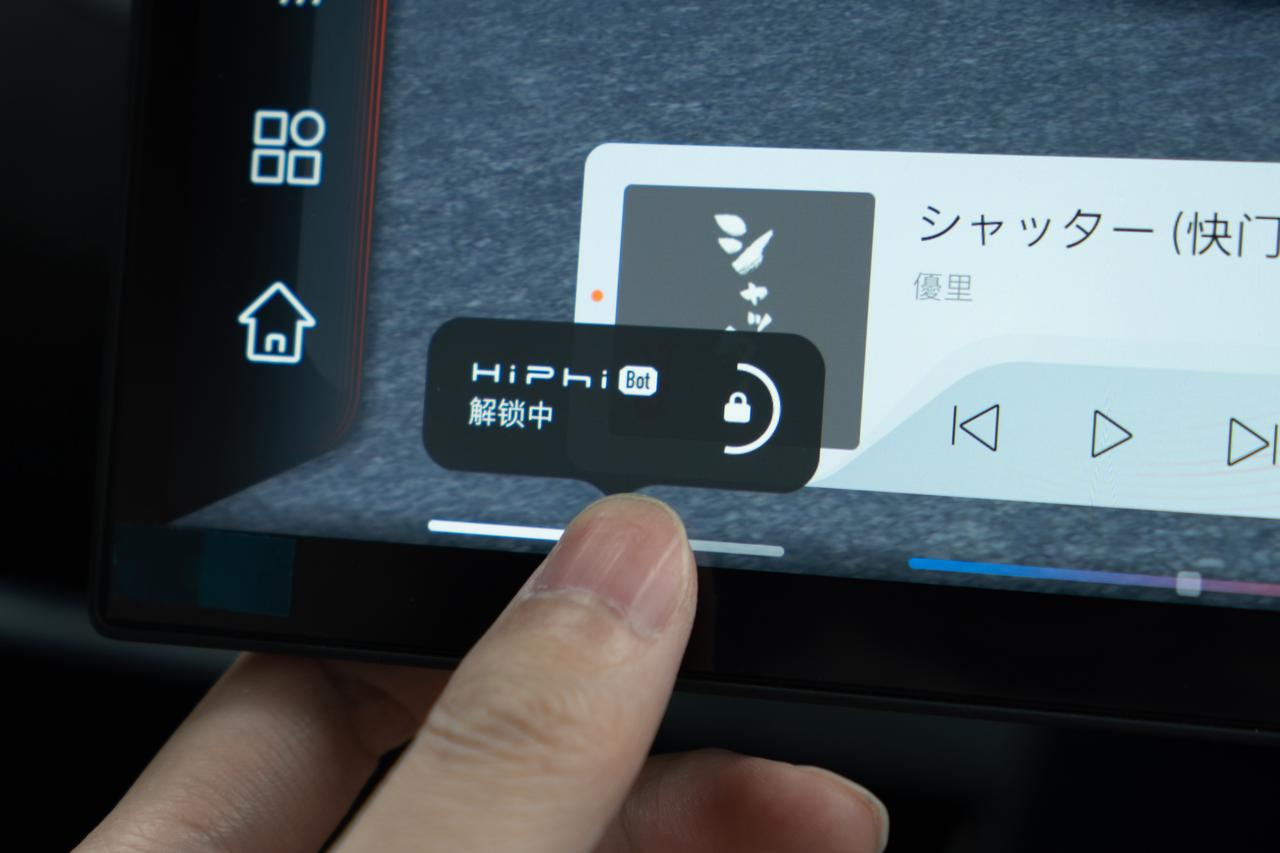
However, it currently does not support direct switching between horizontal and vertical screens, which will be supported by OTA for user-customized switching in the future. The current system can only trigger the screen rotation function in HiPhi Show.
Infotainment System
Unlike the screen and infotainment design of HiPhi X, HiPhi Z has undergone a complete redesign of the infotainment system, which is based on the computing power of the 8155 chip. It not only introduces Unreal Engine for 3D interactive functions, but also adopts a dual system design of QNX+Android. The underlying QNX system has high stability, which ensures that important vehicle information can be displayed normally even if the Android system crashes.
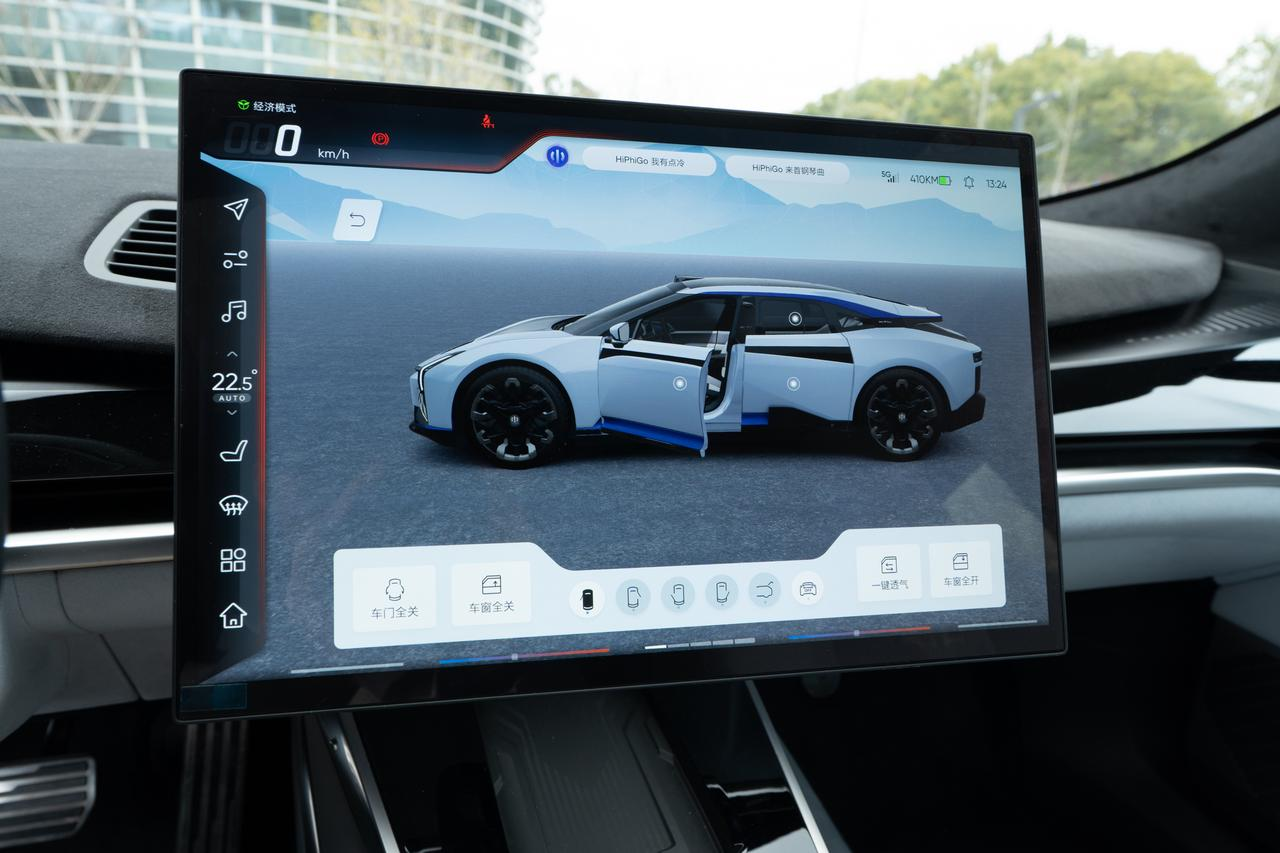
HiPhi Z adopts a no-instrument design, similar to that of Tesla, integrated into the main screen, but with the addition of a HUD configuration. How you look at a design without instruments is up to you. Adding some information to the main screen will inevitably increase the information density of the main screen.
As for the layout of the main interface, this system adopts a left-hand Dock bar design and sets shortcut adjustment functions at the bottom of the screen. The air conditioning and volume can be adjusted quickly by sliding. There are also three small cards above that can be slid up and down to switch different functions, and the left card can switch between music and maps.
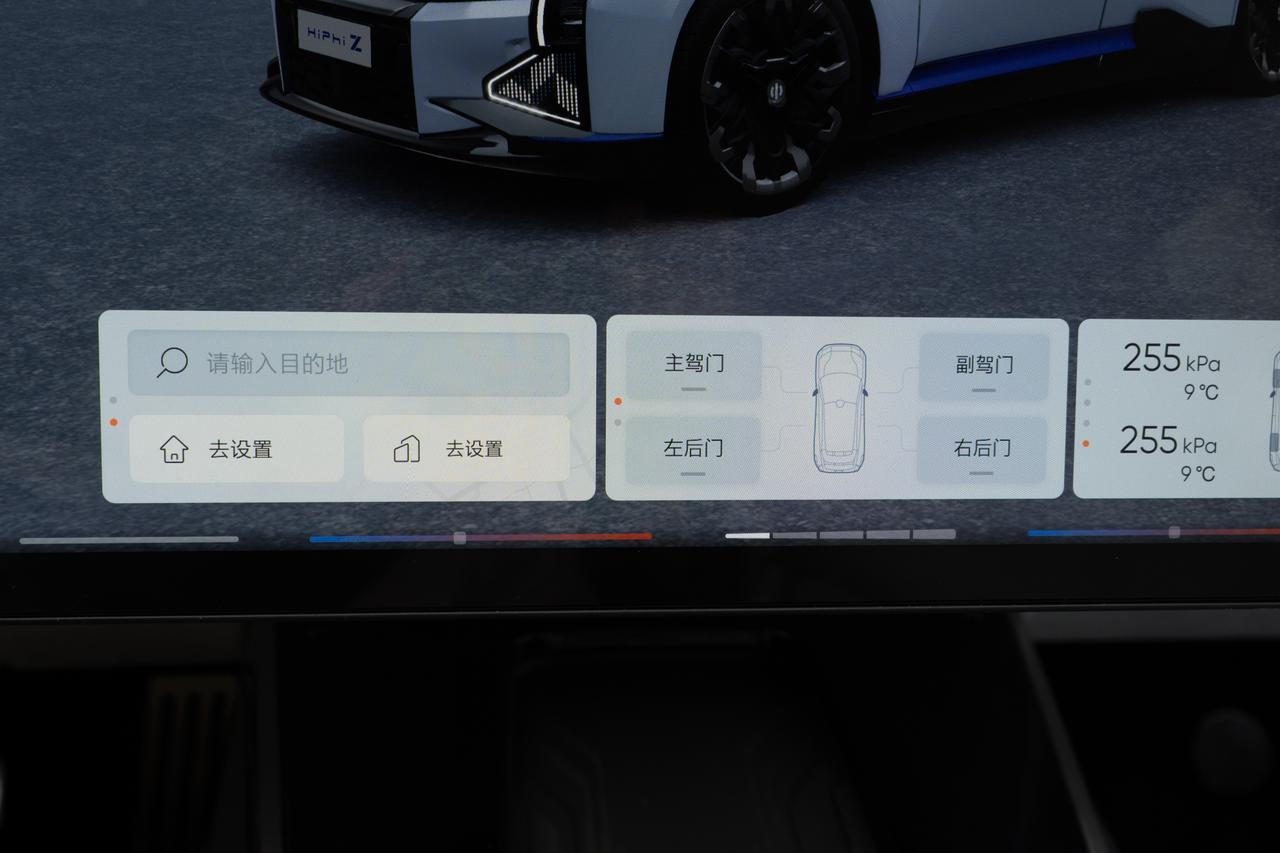

The upper edge of the screen is reserved for a layer of vehicle information. This layer is the QNX system independent rendering information layer mentioned earlier, which mainly displays the speed and vehicle information. Of course, part of it is also to meet regulatory requirements.
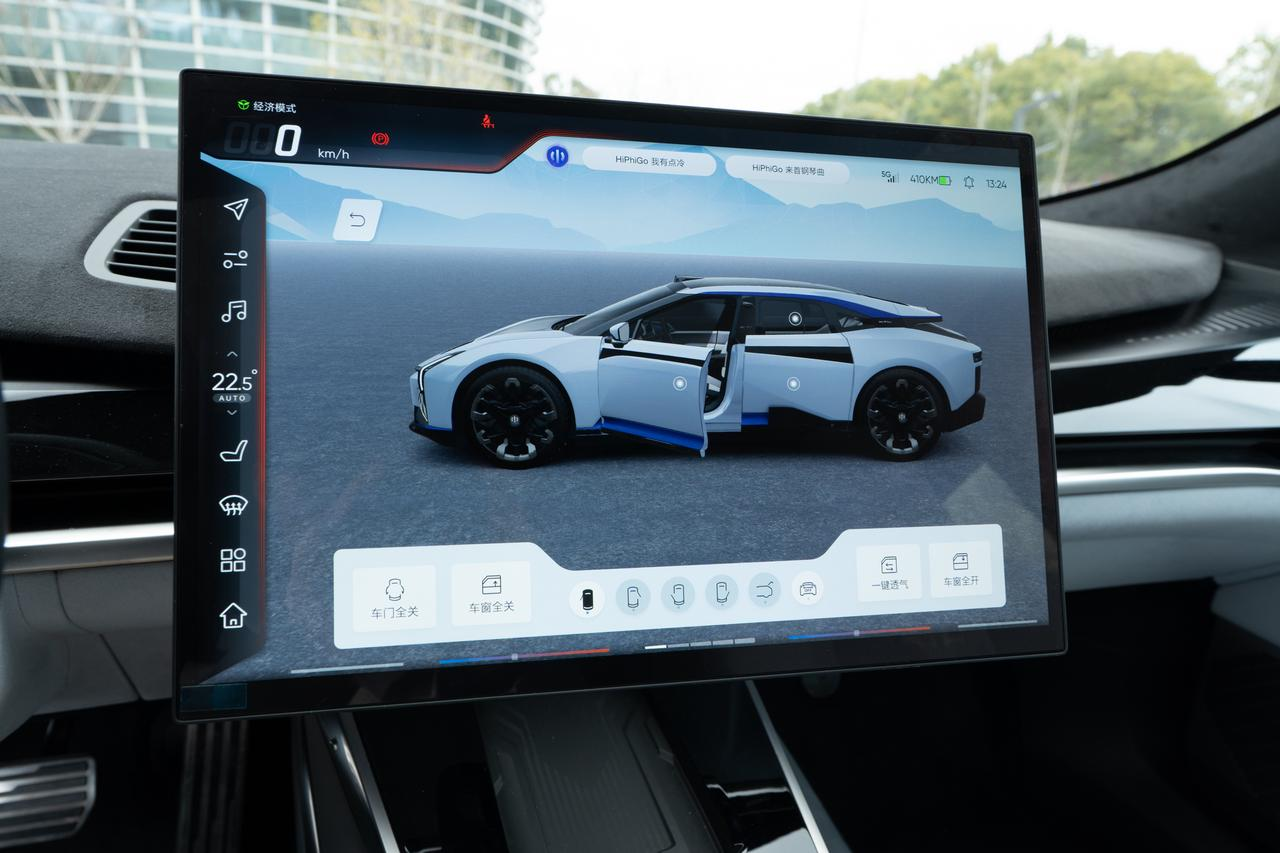
Overall, the design style of the user interface of this system tends to be game-like, and the design of lines and icons is not the current mainstream style of flatness and realism. However, in some details, it reveals some realistic texture, such as the button in the left Dock bar being a pseudo-digital frosted glass effect when activated. This also makes me feel that the design direction of this UI is not very clear. On the one hand, it wants to be unified with the design style of the entire vehicle, and on the other hand, it wants to match the mainstream aesthetics as much as possible. This is also an area where I hope that HiPhi can optimize in the future.

The 3D interactive methods were emphasized in the previous content of Eletre, although they both used virtual engines, there are still some differences between them.
Lotus’s system is more inclined to extreme visual effects and texture, while Gaohe’s 3D interface sacrifices some of the graphics on ensuring better interactive experience.
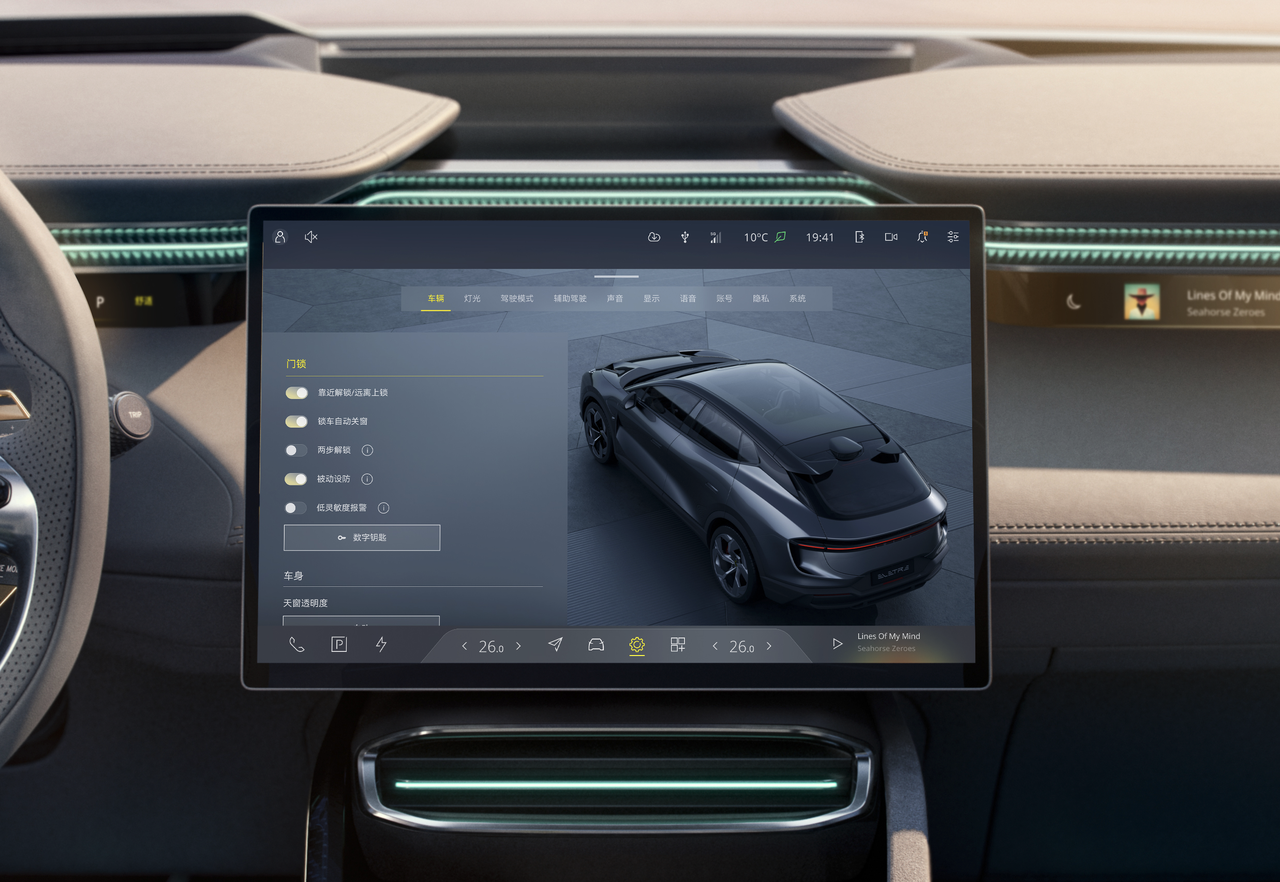
For example, Lotus’s vehicle interface can only be operated on the appearance, and cannot directly switch to adjust the air conditioning and seat inside the car. Some functions are interacted with by multiple scenes and texture mapping, which will cause some sense of disconnection in interaction.
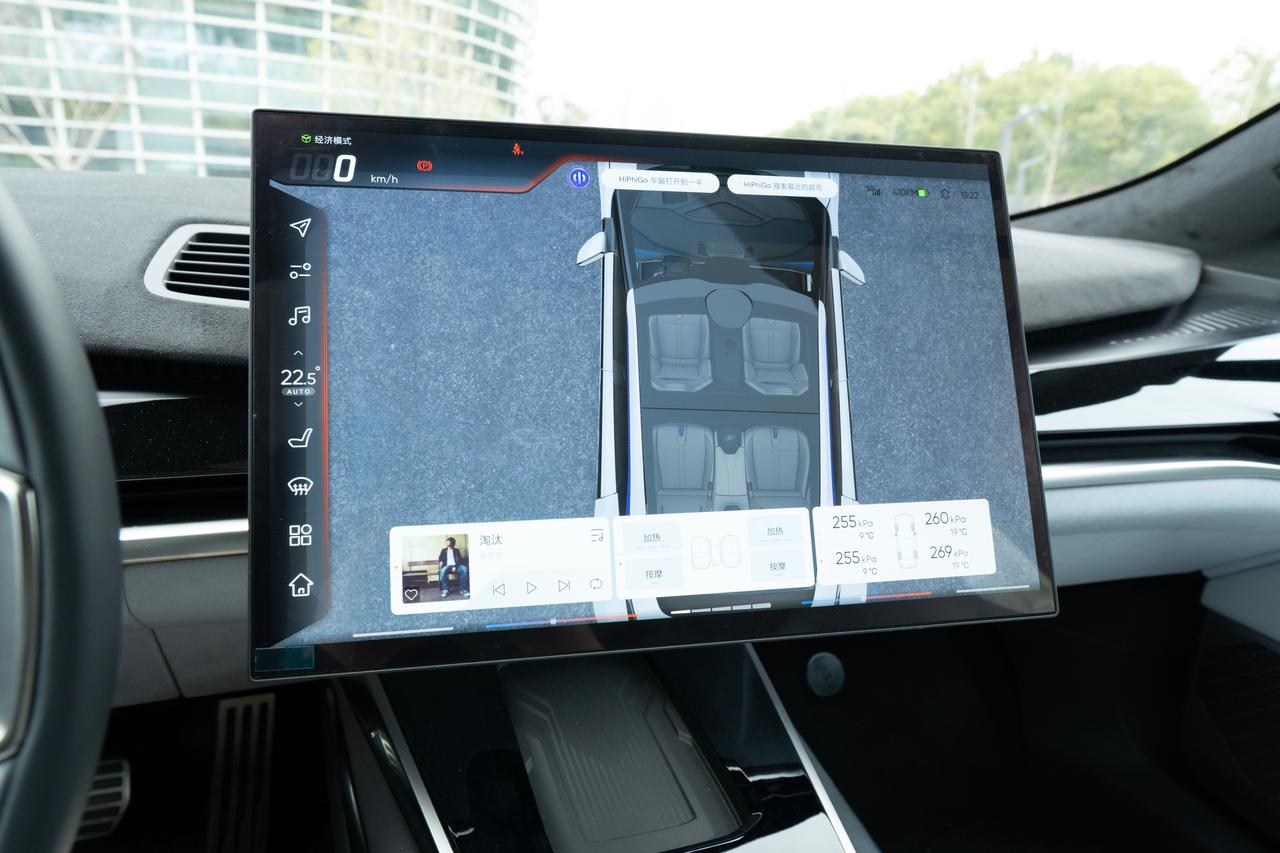
Gaohe’s 3D interface loads the complete model of the exterior and interior of the vehicle at once, and after adjusting the outside, it can directly switch the perspective to adjust the air conditioning and seats inside the car. The whole process is continuous, without scene switching and waiting for loading time. This kind of experience is seamless in interaction.
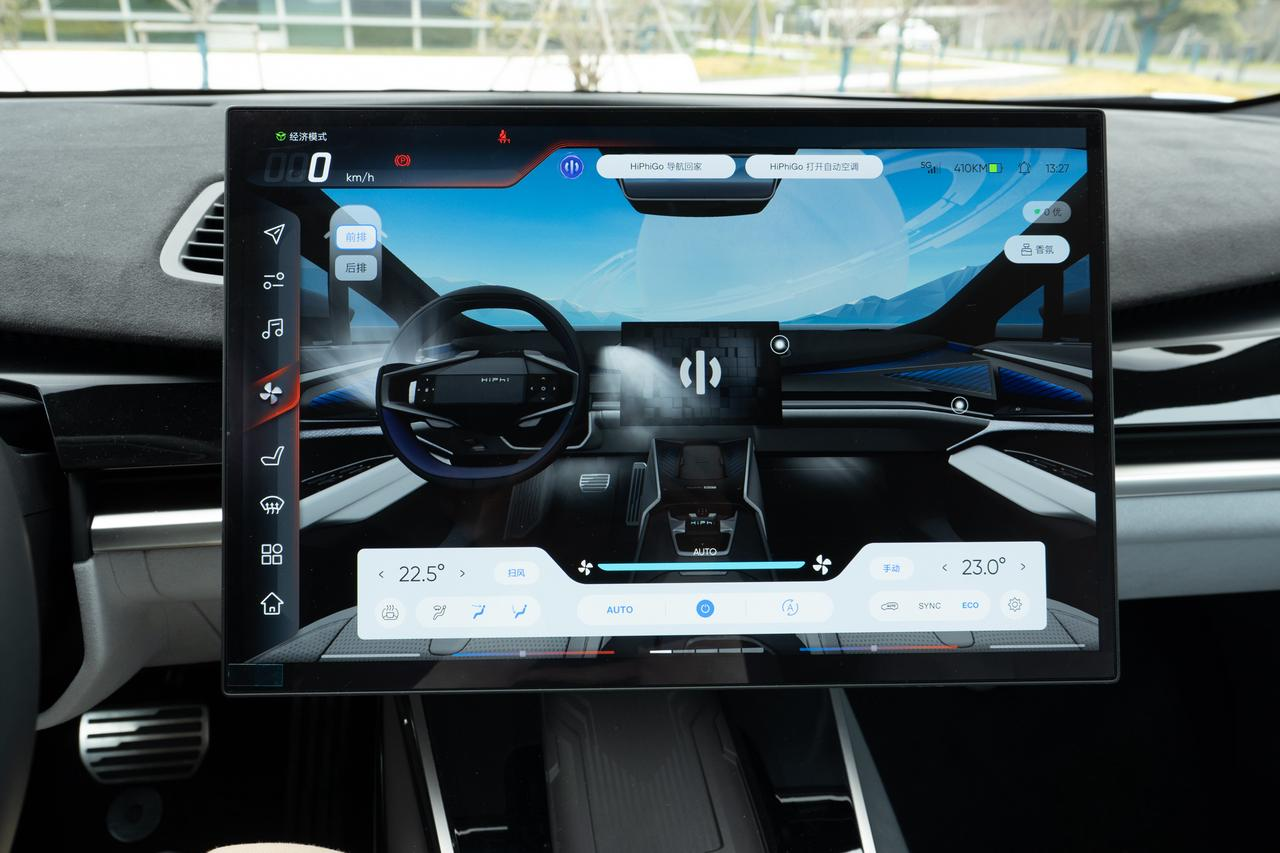
What surprised me the most is that this 3D interface supports directly displaying the assisted driving, which added a seamless switching function to this interface.

Regarding the design of the negative-one screen, considering the layout on the interface, the side sliding gesture has been changed to an independent button to call out. In my opinion, this reduces the convenience in operation to some extent. Therefore, in a certain sense, it can also be understood as a secondary menu.
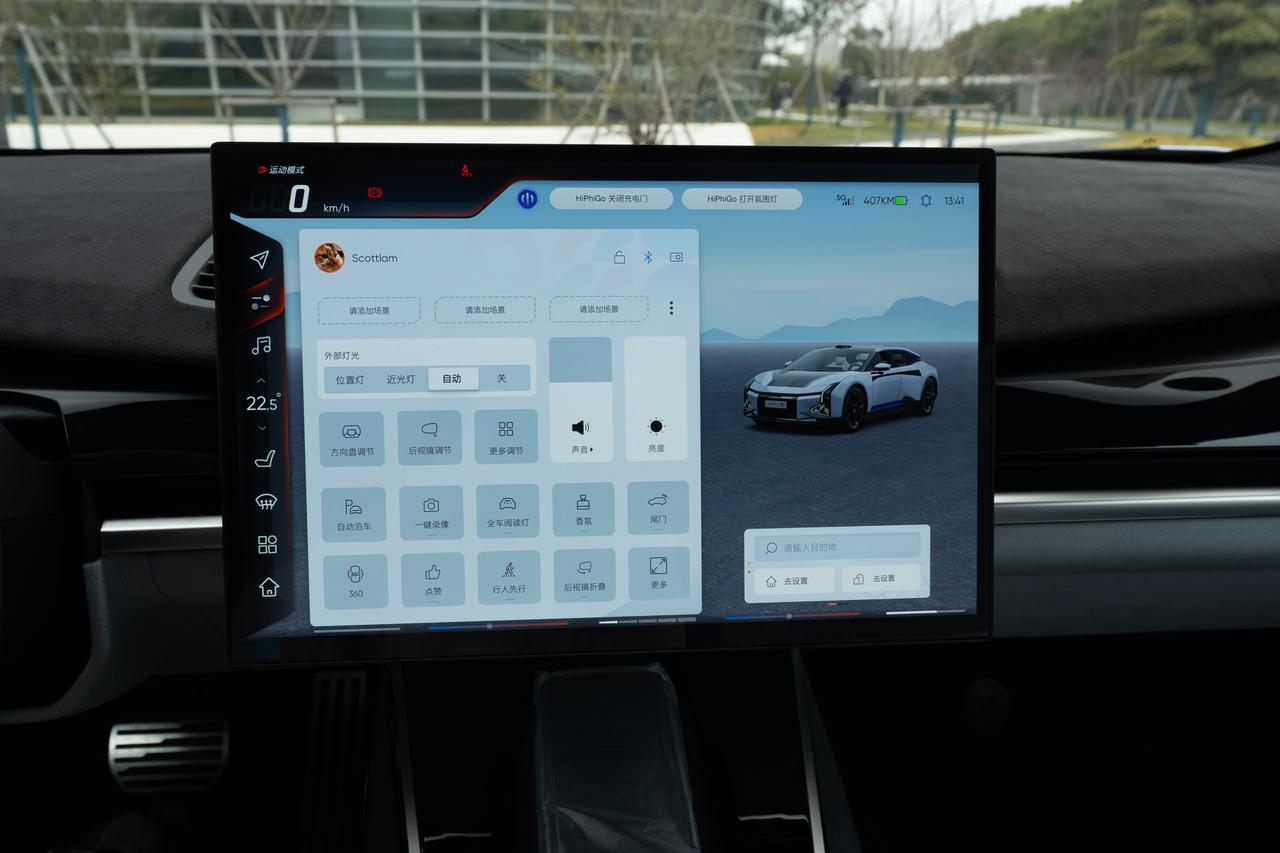 Below are the English Markdown results with HTML tags retained:
Below are the English Markdown results with HTML tags retained:
In addition, the functions triggered by the left Dock bar are displayed in a floating manner without completely invading the right 3D vehicle and card. This design makes it very convenient to return to the main interface in terms of interaction. Navigation can also choose to display in full screen or half screen.
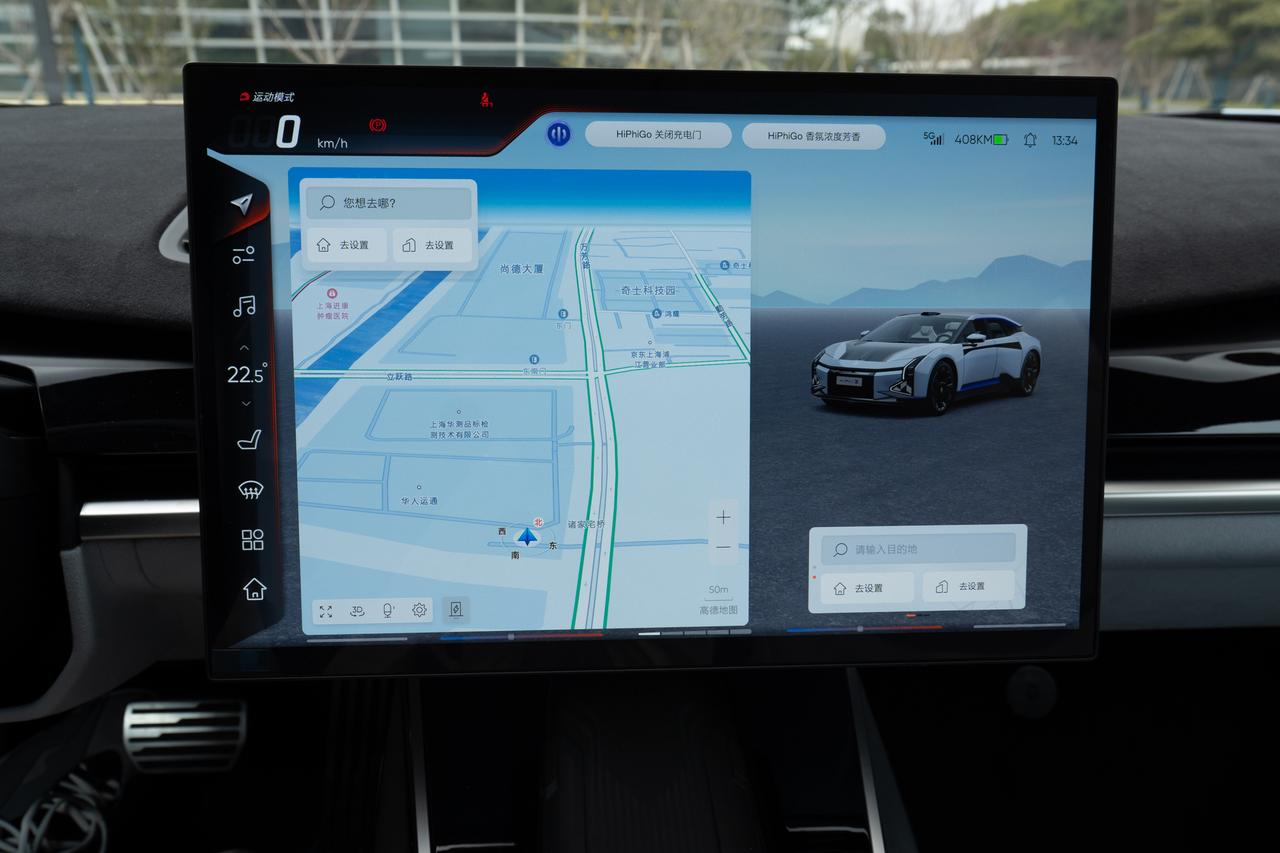
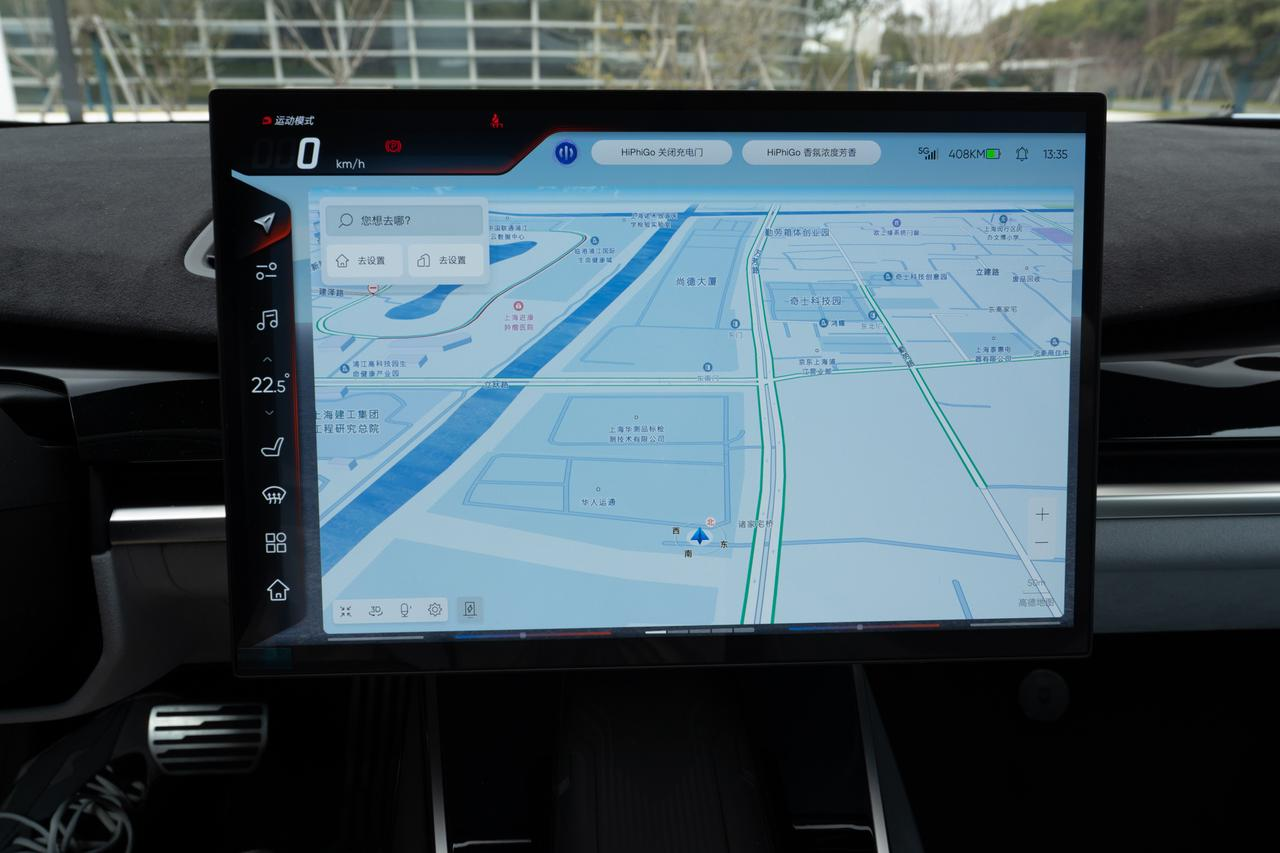
In terms of support for third-party applications, HiPhi Music has customized a special version for QQ Music. Currently, the third-party applications that have been loaded include NetEase Cloud Music, iQiyi, Bilibili, Lizhi, Tencent Video, Huoshan Car Entertainment, and Migu Video. In terms of richness, it should be able to meet the needs of most users.
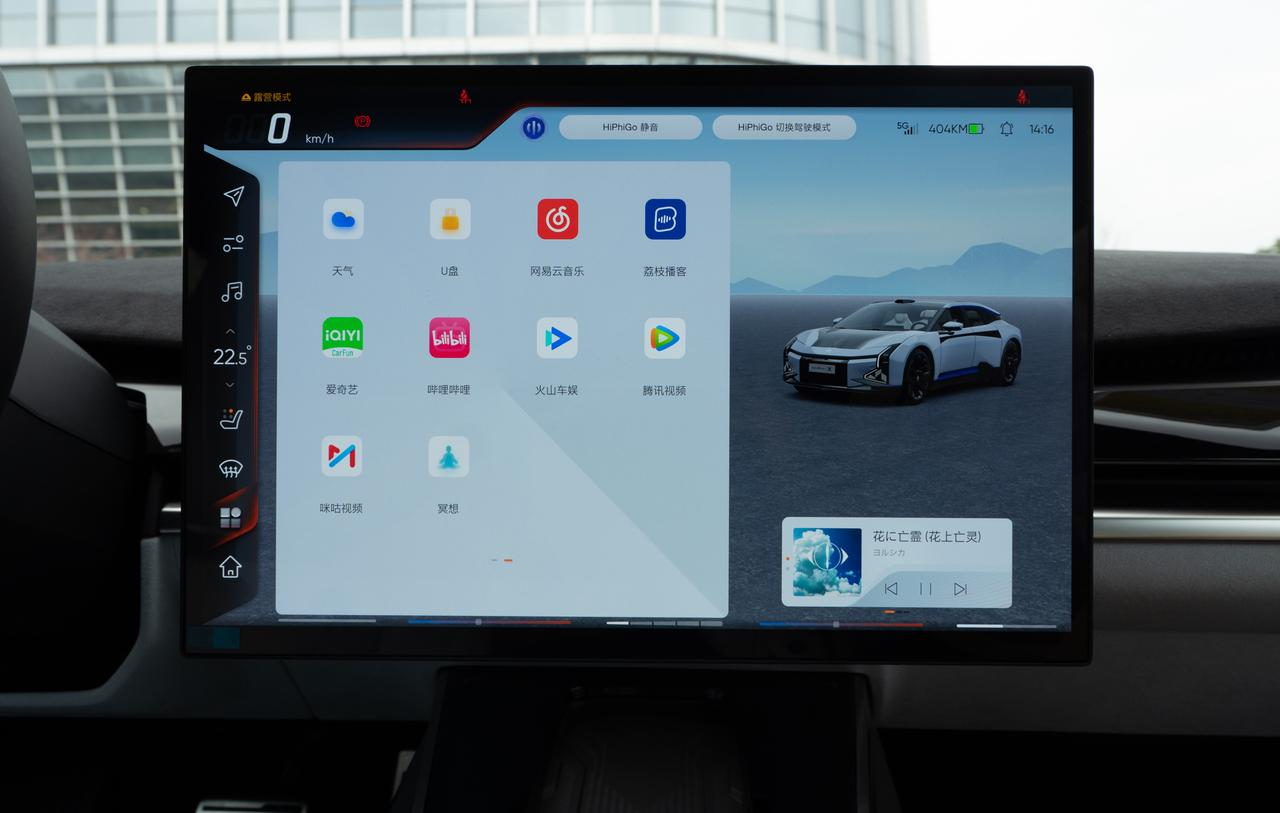
HiPhi Play collaborative platform is integrated in the system, relying on the H-SOA super electronic and electrical architecture. The first batch of 120 programmable functions are available for users. By customizing and combining these functions, various custom scenes can be formed and saved as scene cards. This function allows users to customize their own intelligent experience. In theory, if more functional interfaces are opened in the later period, there can be a very large user development potential.
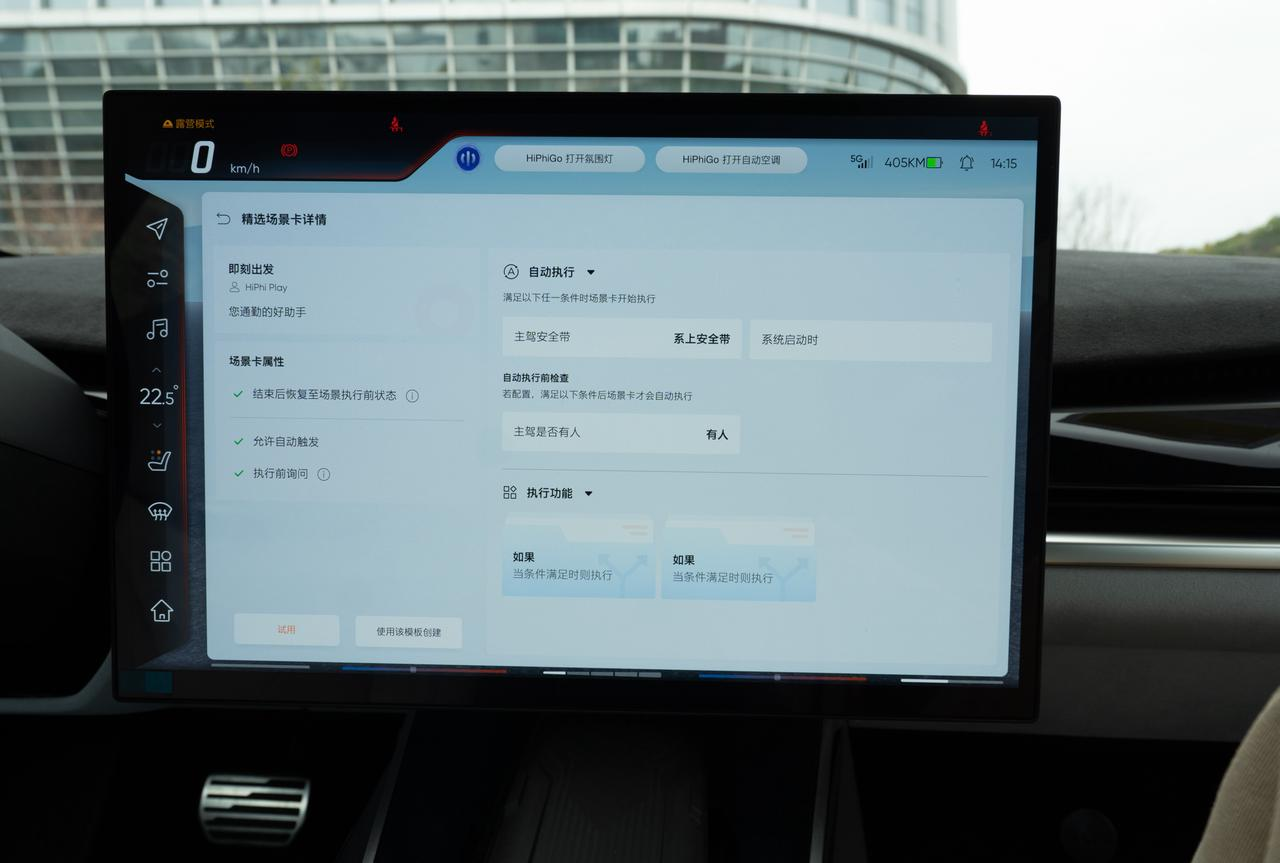
Intelligent Lighting
In addition to the above, there is also an intelligent function that can greatly enhance the playability, which is HiPhi Show.

Like the HiPhi X, HiPhi Z is equipped with PML programmable headlights, as well as ISD intelligent interactive lights on the front and rear of the car and on the side. When working together, many playful functions can be realized. For example, custom text can be directly projected on the wall in front of the car, and welcome messages can be displayed using the ISD interactive lights on the side of the car.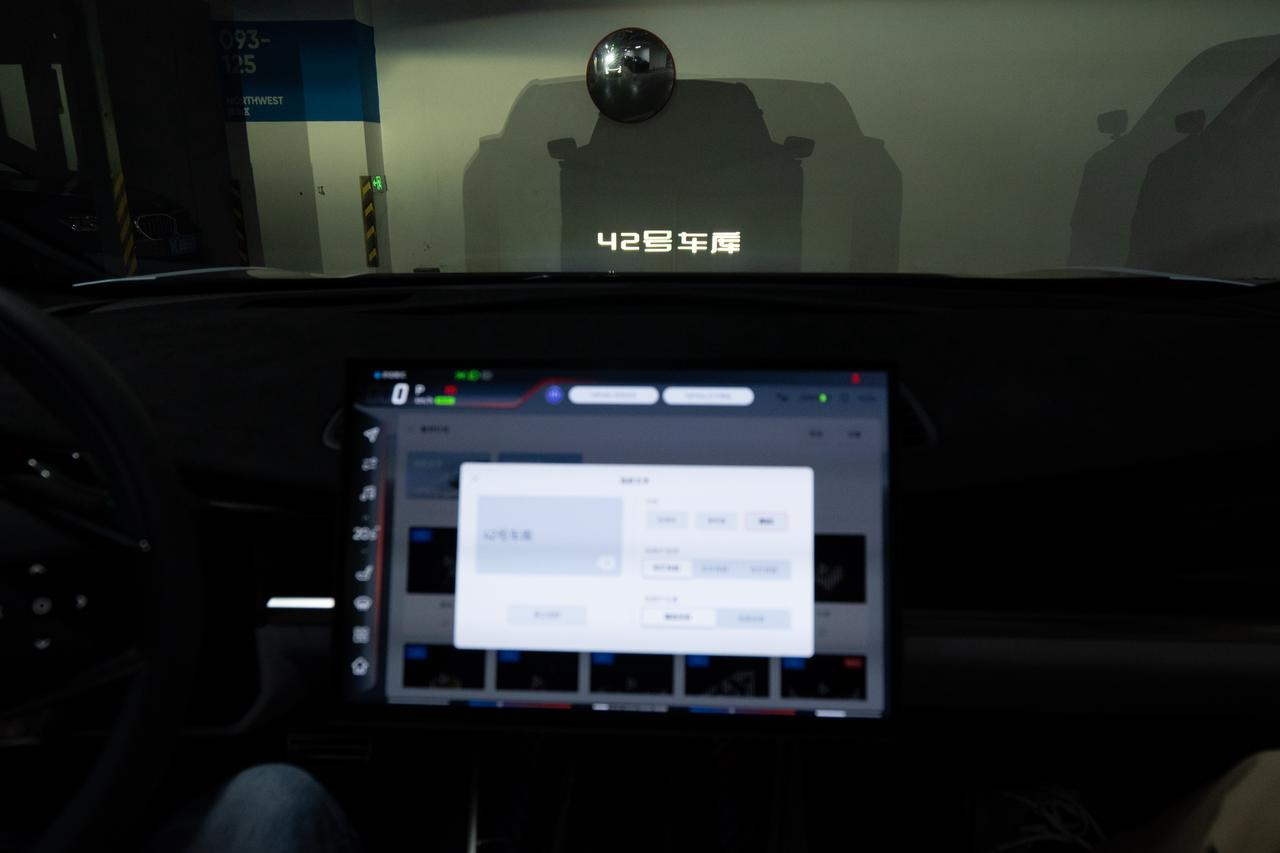
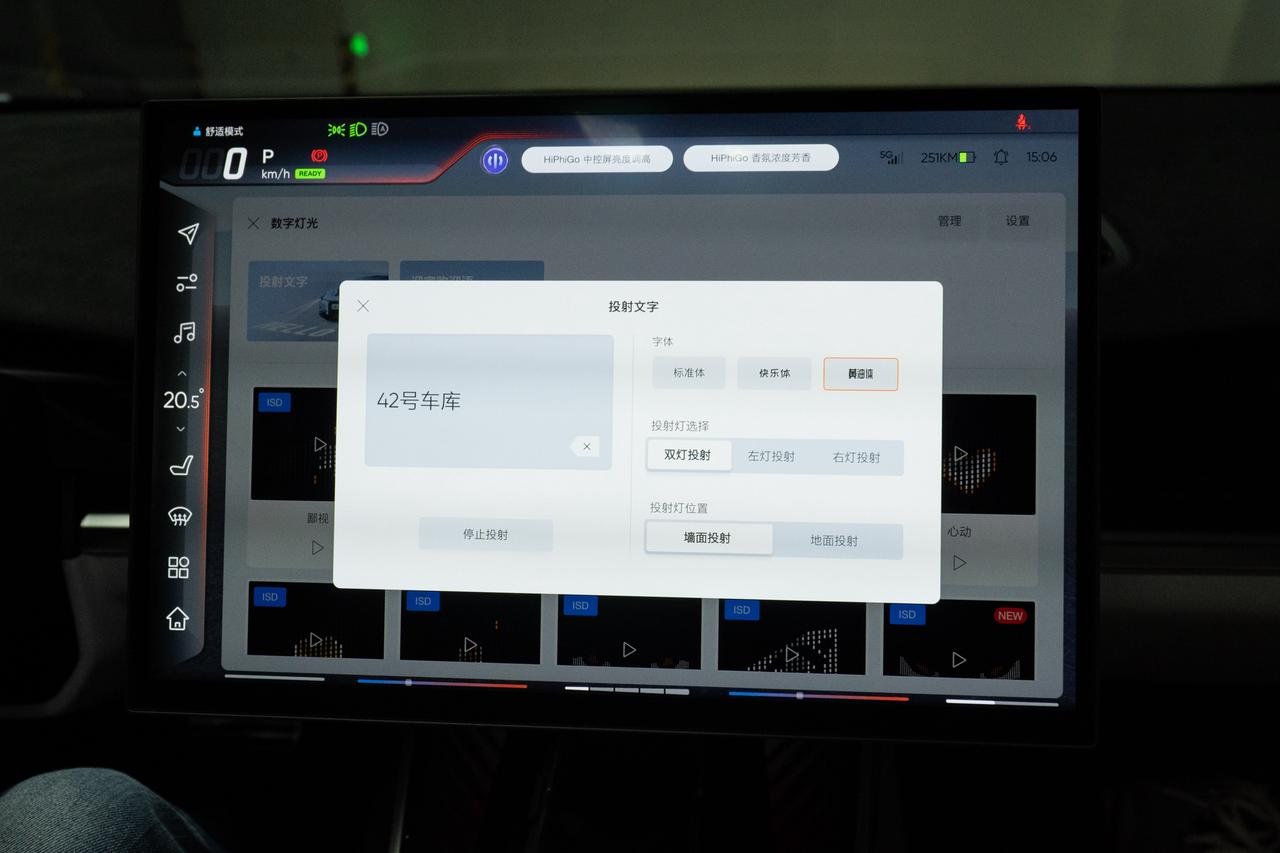
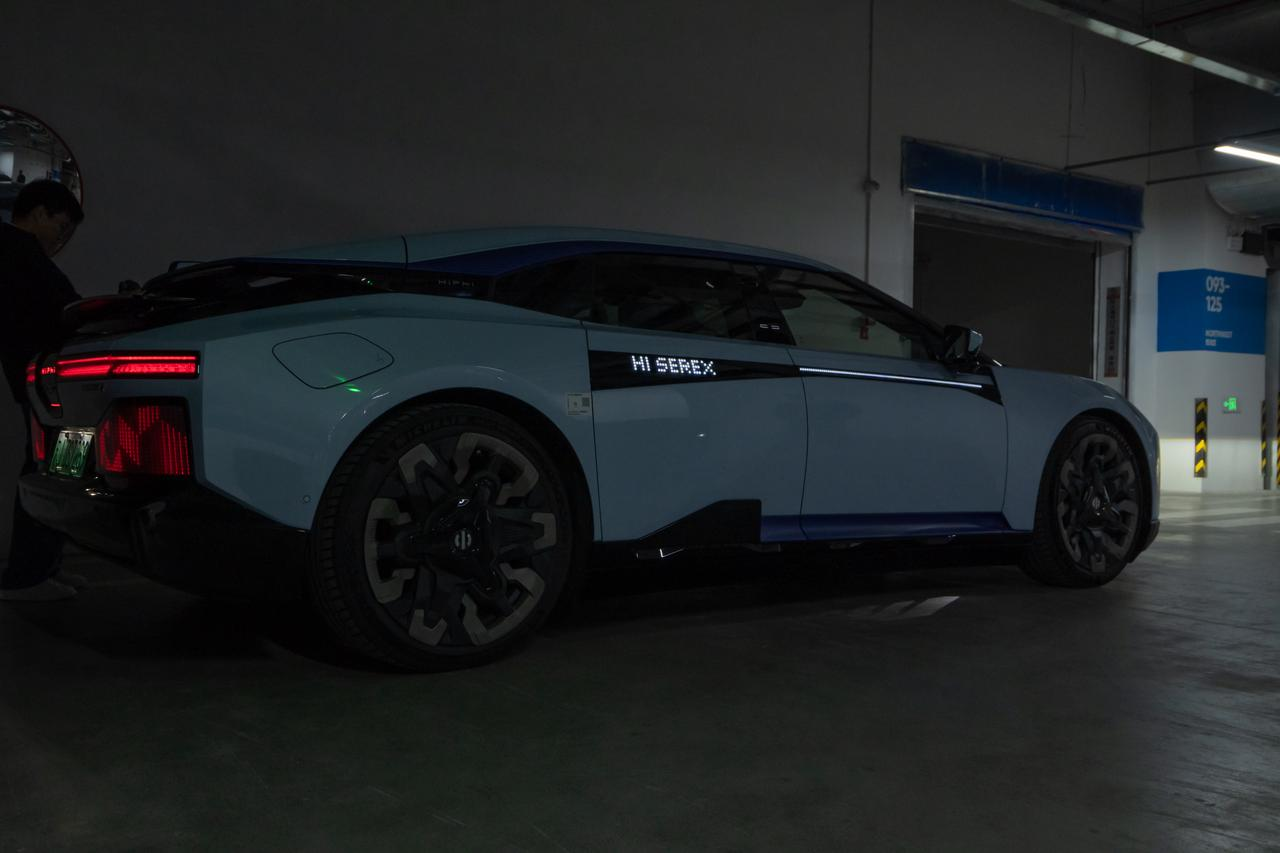
HiPhi Show combines these intelligent lights together, and even interacts with the car door, window, HiPhi Bot, and sound system to put on a performance.
The Blessing of British Treasure Sound System
One important component of the intelligent cockpit, in my opinion, is the sound system, as most of the functions cannot be used while driving, but listening to music is possible.
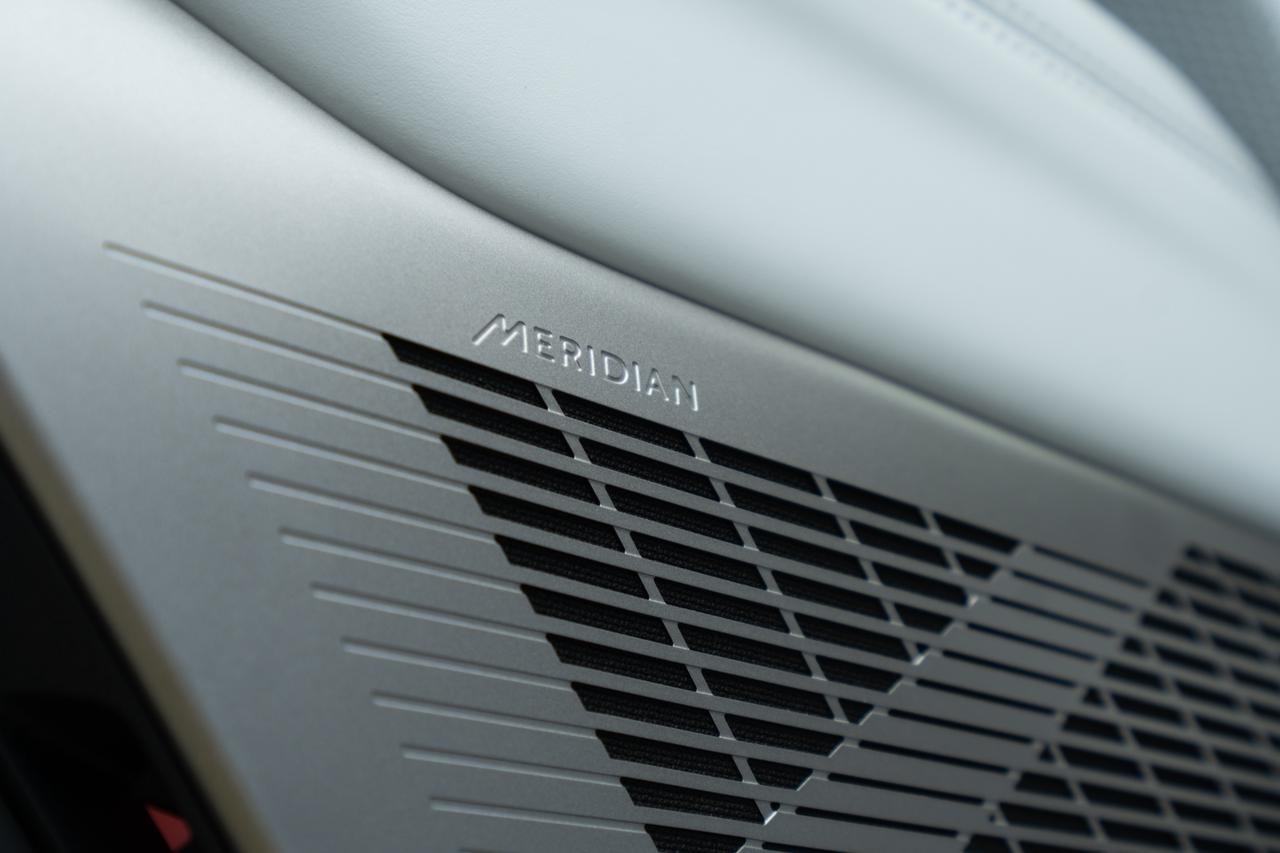
HiPhi Z is equipped with the Meridian sound system of British Treasure, which has similar parameters with current models that support Dolby panoramic sound, with 23 speakers including 4 sky channels, 1 high-power subwoofer, and 4 surround speakers. These parameters are nothing new, but what impresses me the most is that each speaker of HiPhi Z is equipped with at least one dedicated independent power channel. The undistorted power of each channel can reach up to 120 W, and the maximum output power of the system under 1% distortion rate is up to 1920 W.
In terms of actual listening experience, the tone restoration of the sound system is very high. The listening effect of human voice song and Hotel California basically meets my expectations, and the sound quality accuracy and balance reach the Hi-Fi level. Moreover, there is almost no sound distortion in the default mode, which is also the reason why I think the tuning of this sound system is excellent. Nowadays, many car models deliberately create some “non-mainstream” styles of tuning to make a difference, but most of them do not sound good when listening to music. Therefore, I think the tuning of HiPhi Z is of excellent quality in terms of listening experience, which even ordinary people will find it very good.
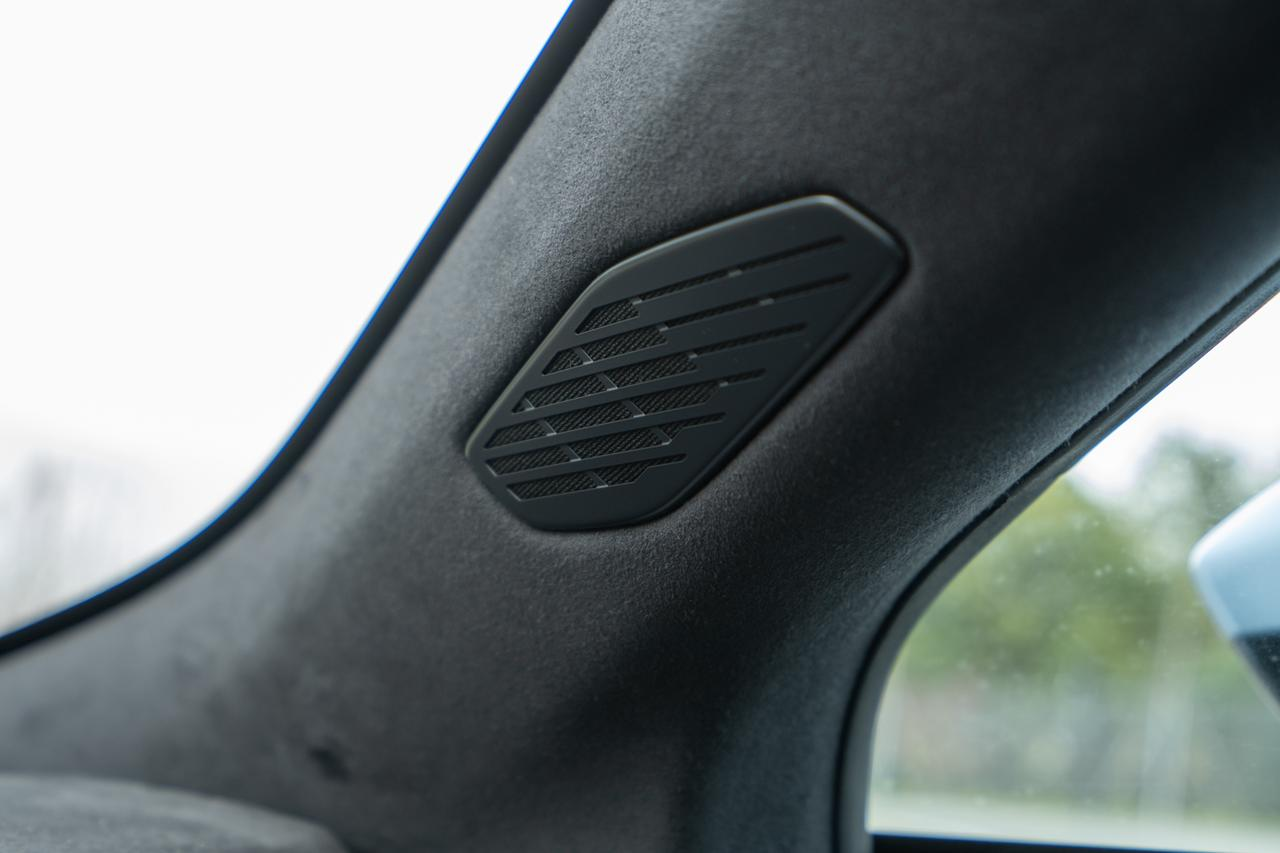 Another aspect that I believe can help enhance the HiPhi Z’s audio performance is its sound insulation. On top of the extravagant configuration of soundproof glass throughout the vehicle, HiPhi Z also implemented reinforced sound insulation treatment for the motor, which is not particularly noisy to begin with. As a result, it is difficult to hear any motor noise when driving the HiPhi Z, enabling drivers to enjoy music in a better environment.
Another aspect that I believe can help enhance the HiPhi Z’s audio performance is its sound insulation. On top of the extravagant configuration of soundproof glass throughout the vehicle, HiPhi Z also implemented reinforced sound insulation treatment for the motor, which is not particularly noisy to begin with. As a result, it is difficult to hear any motor noise when driving the HiPhi Z, enabling drivers to enjoy music in a better environment.
Finally
HiPhi Z embodies many distinctive features in various aspects. These features not only catch people’s attention visually but also involve a great deal of innovation and material. In some aspects, HiPhi Z even spares no effort and cost. Regardless of users and markets, the fact that a car like HiPhi Z, which dares to innovate and create differently, can be launched in the current market is itself worthy of praise.
Regarding intelligence, it is evident that HiPhi is attempting to strike a balance between “usability” and “coolness” for its car system. Overall, this system performs well on this point. However, there is still room for improvement in terms of overall completeness. This is also where we can look forward to HiPhi Z’s OTA updates since this car has just started delivery.
This article is a translation by ChatGPT of a Chinese report from 42HOW. If you have any questions about it, please email bd@42how.com.
